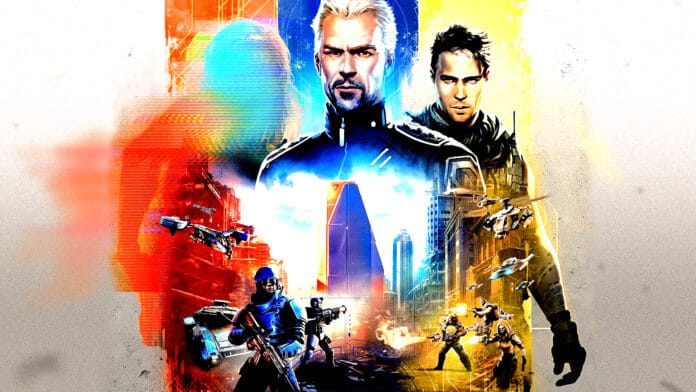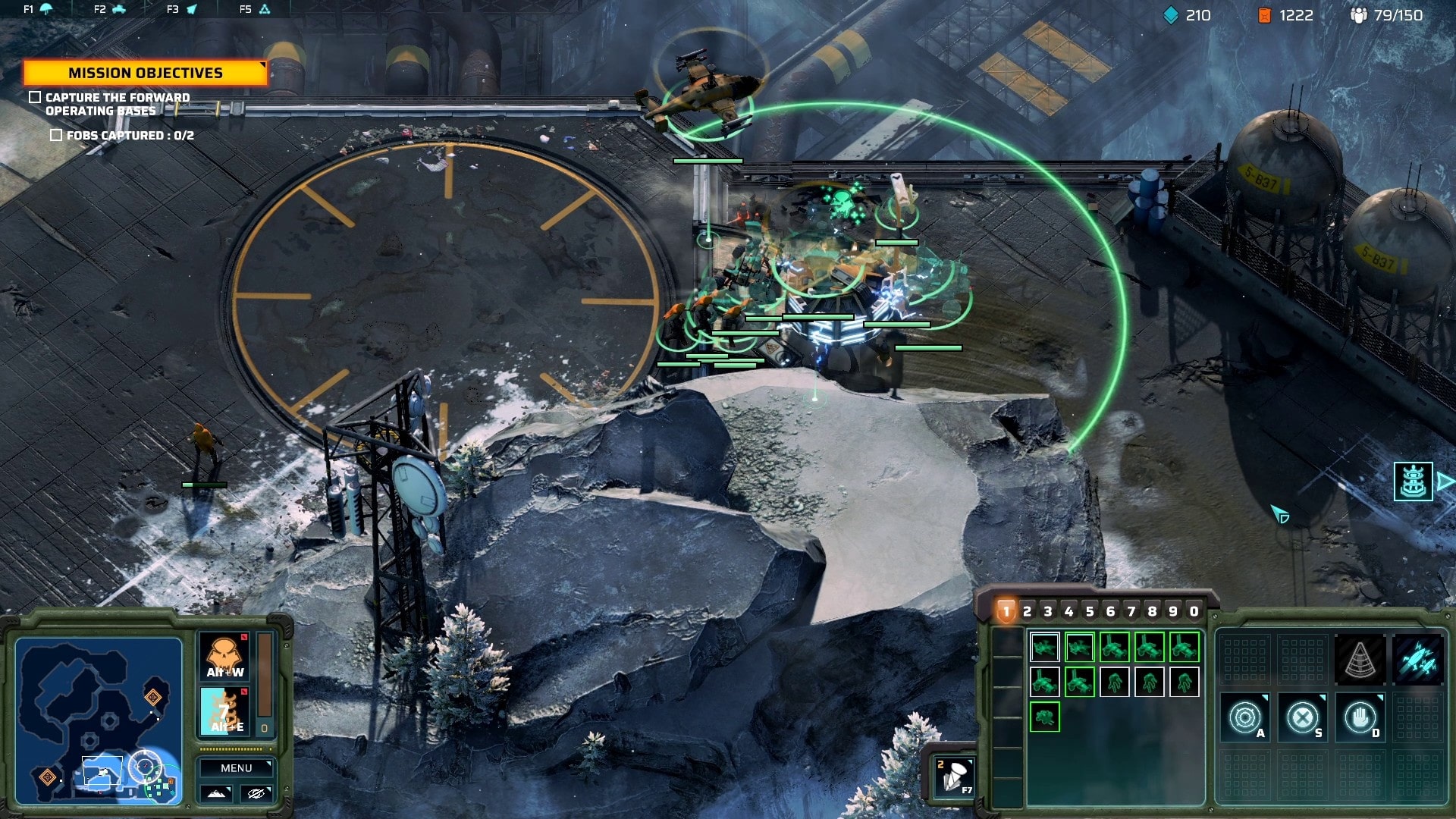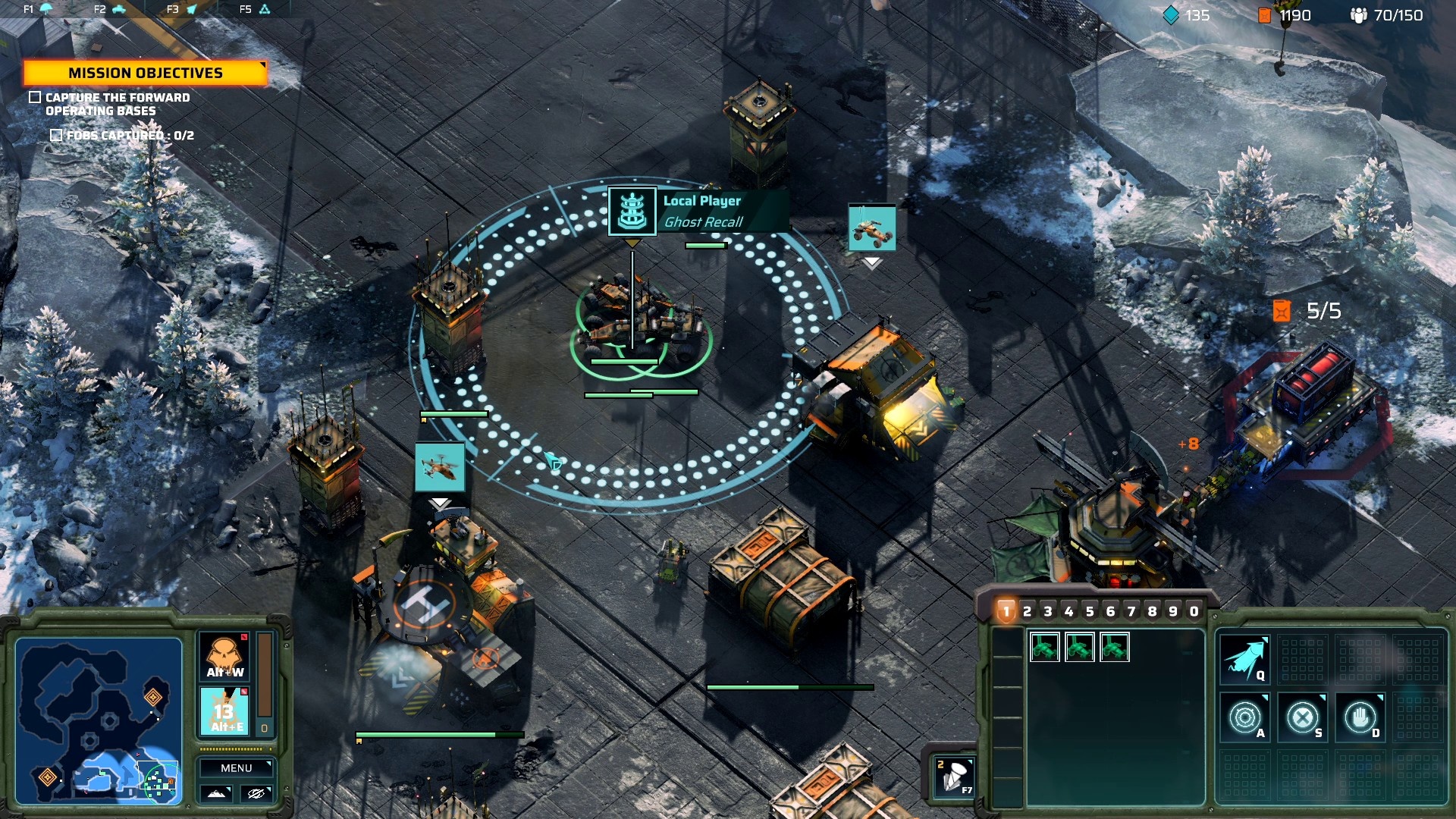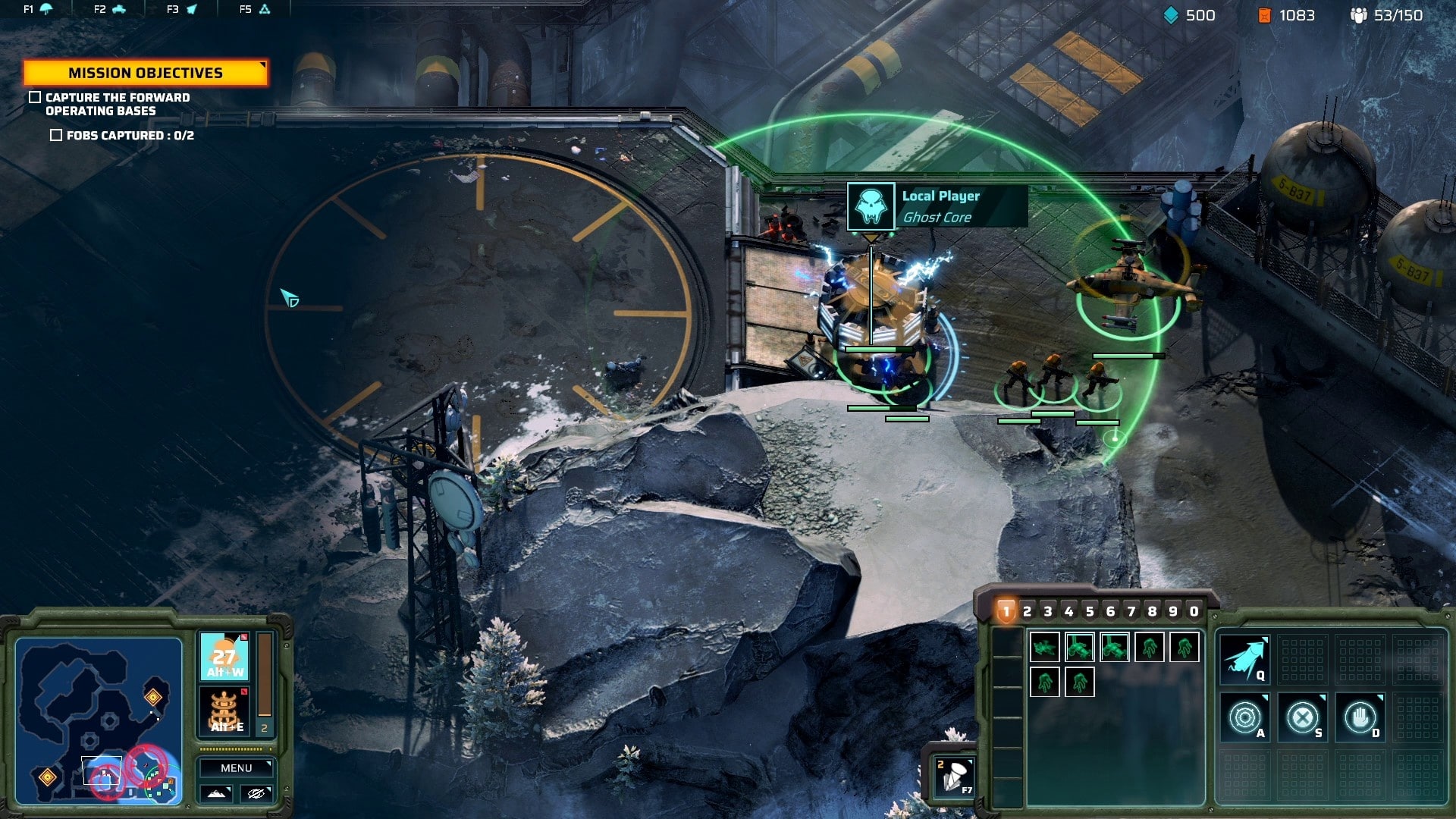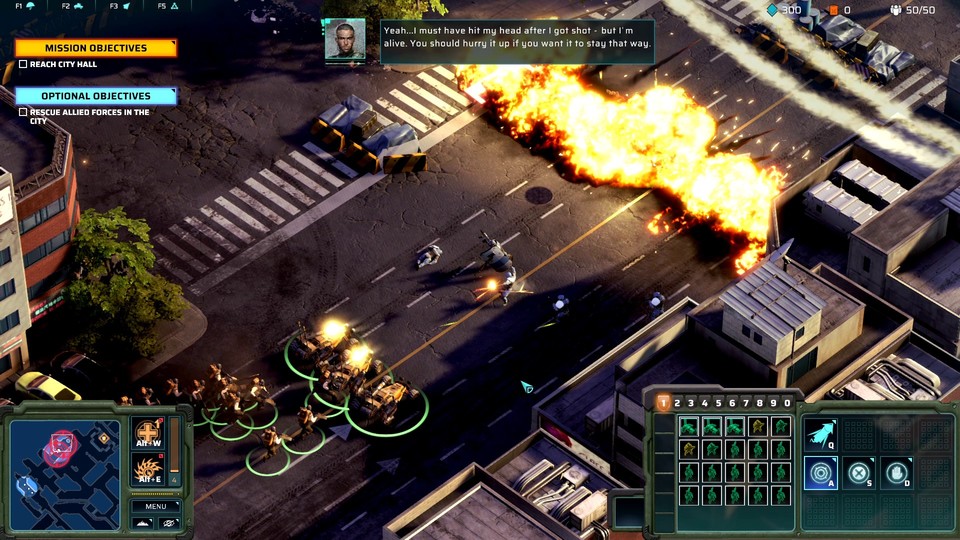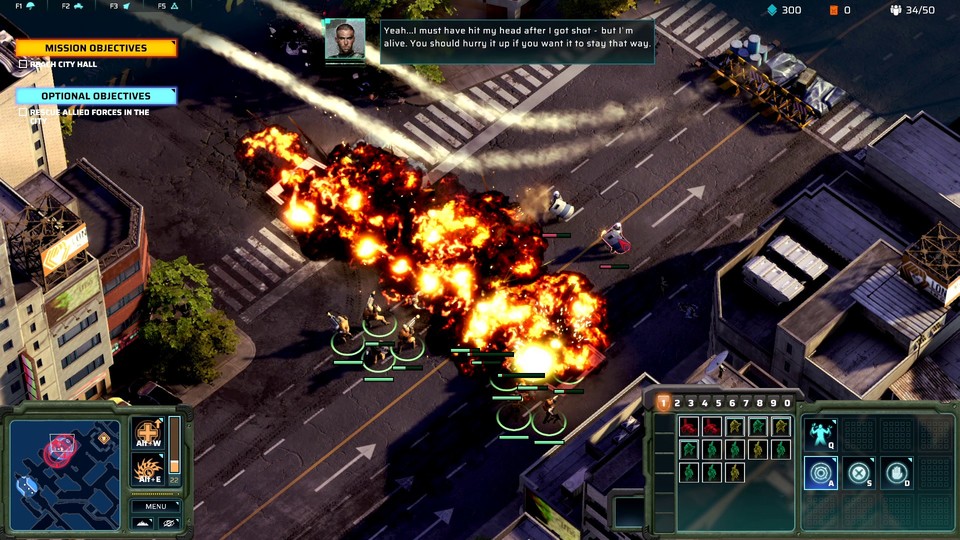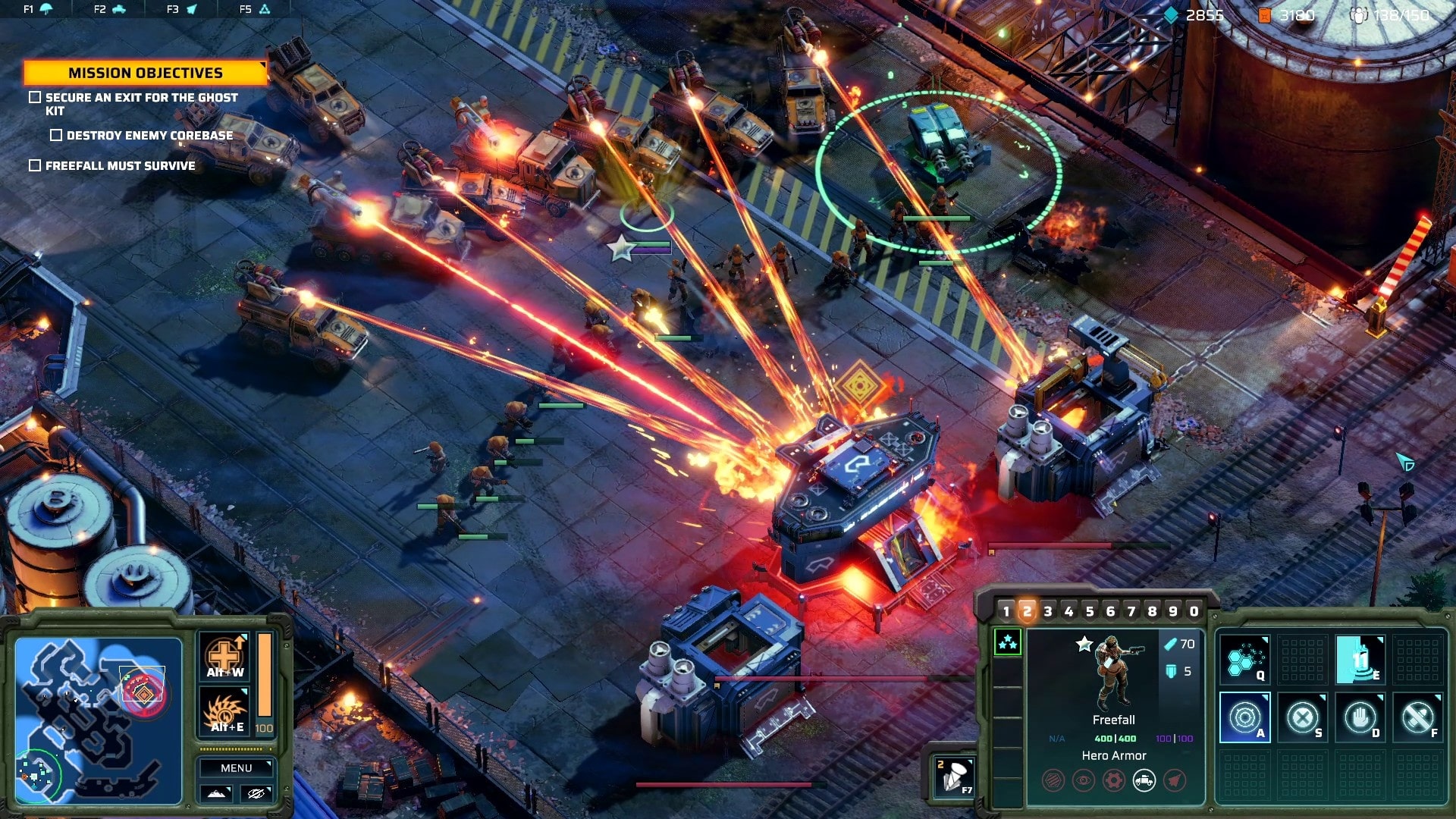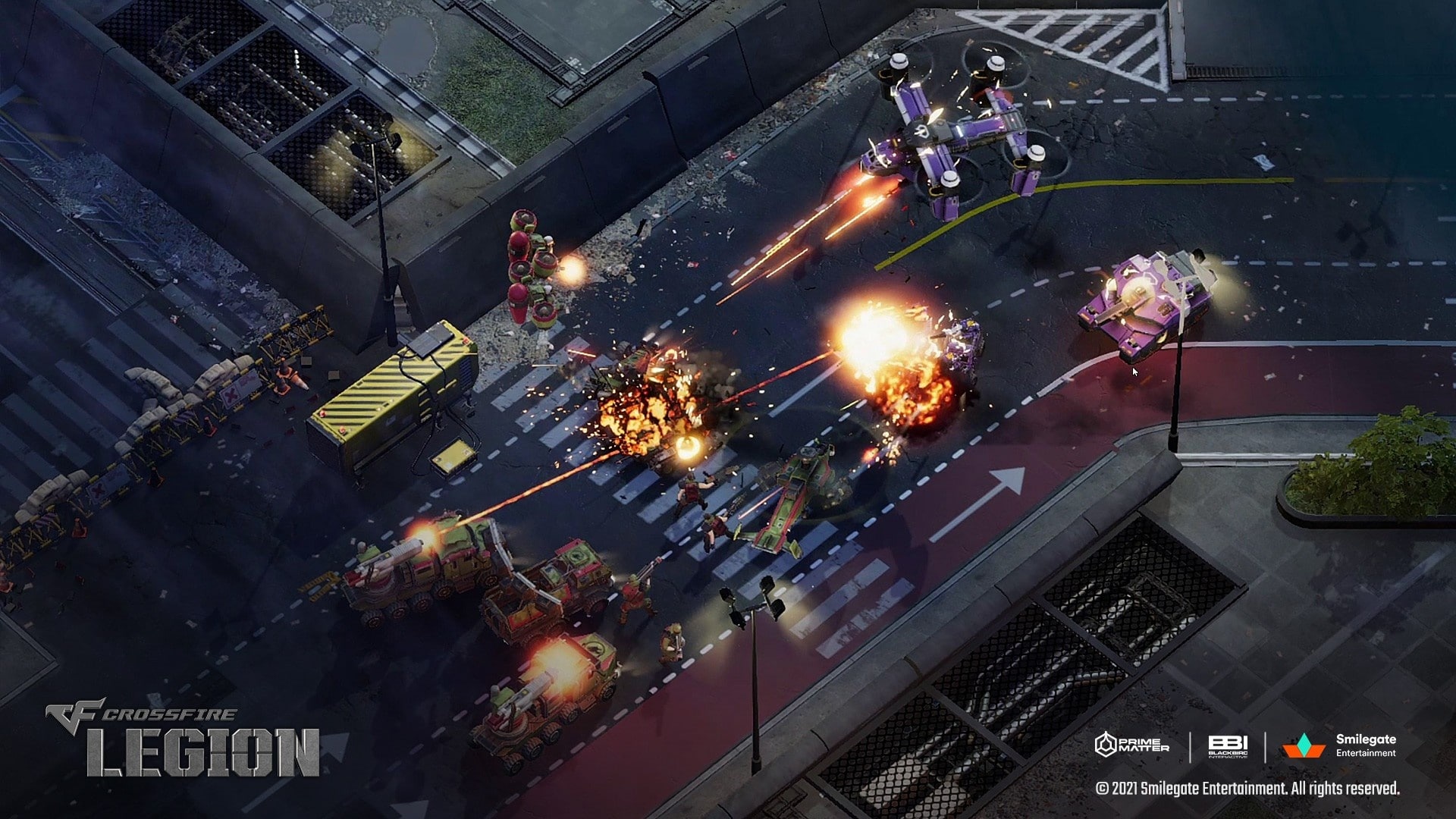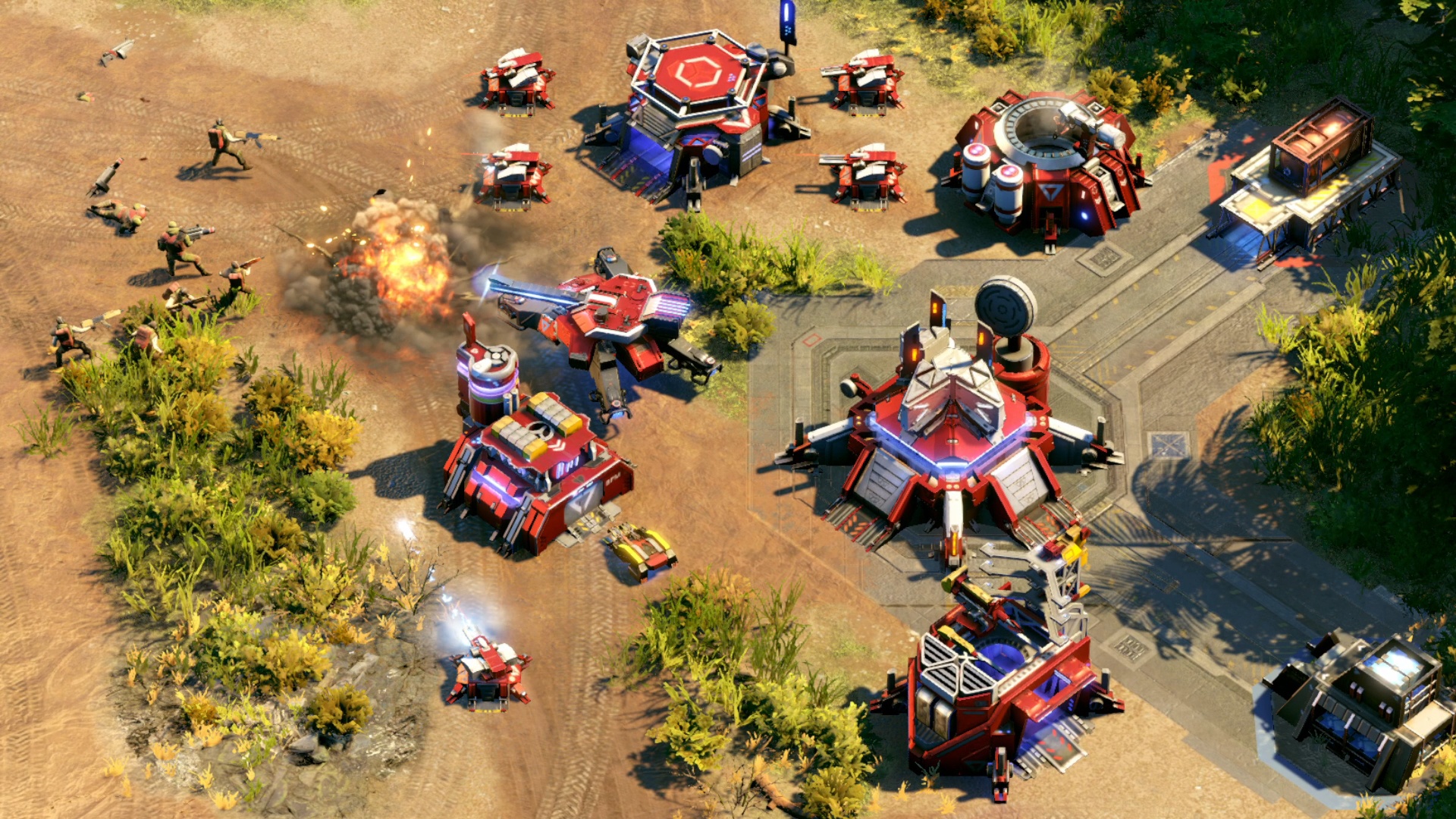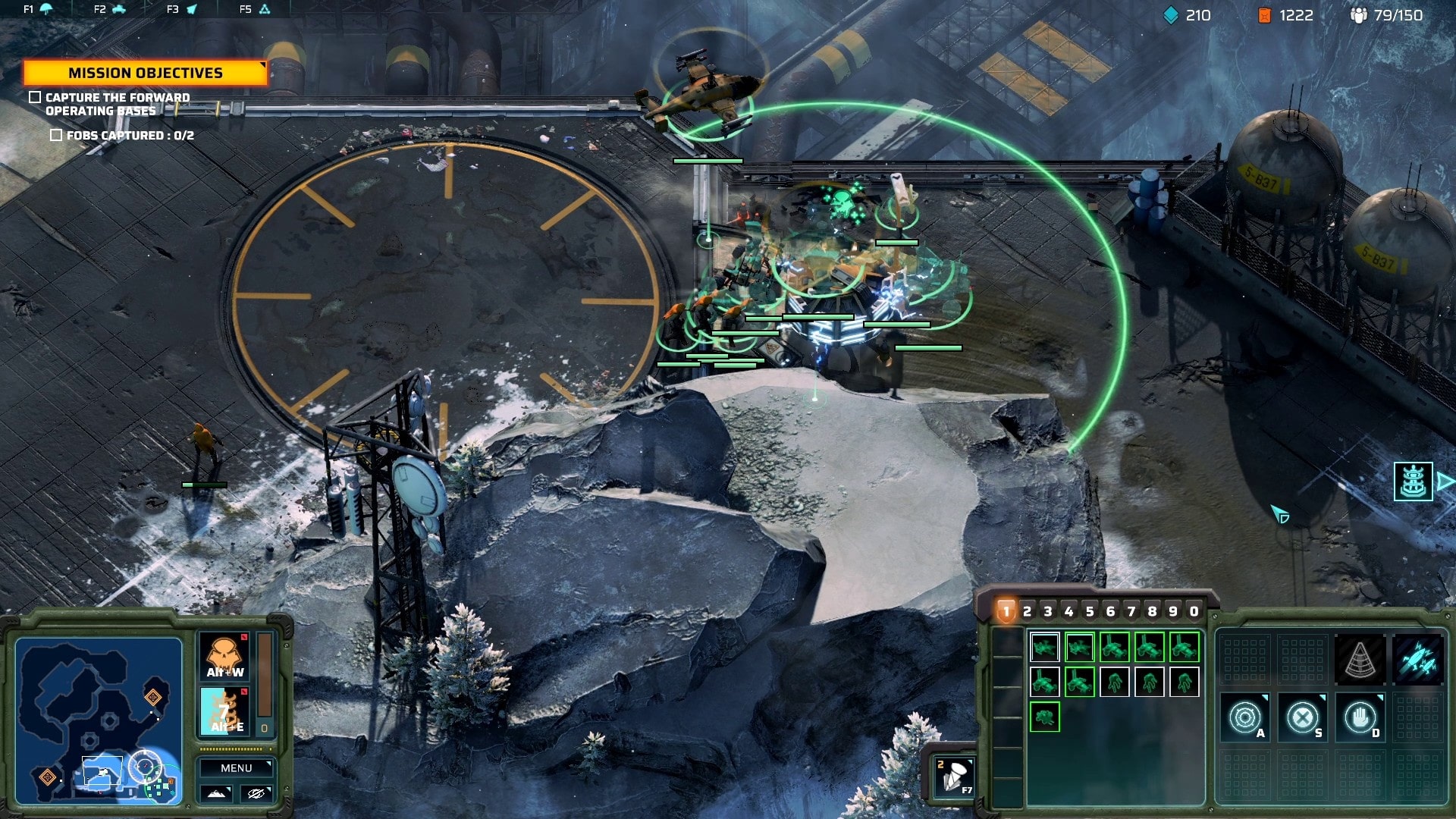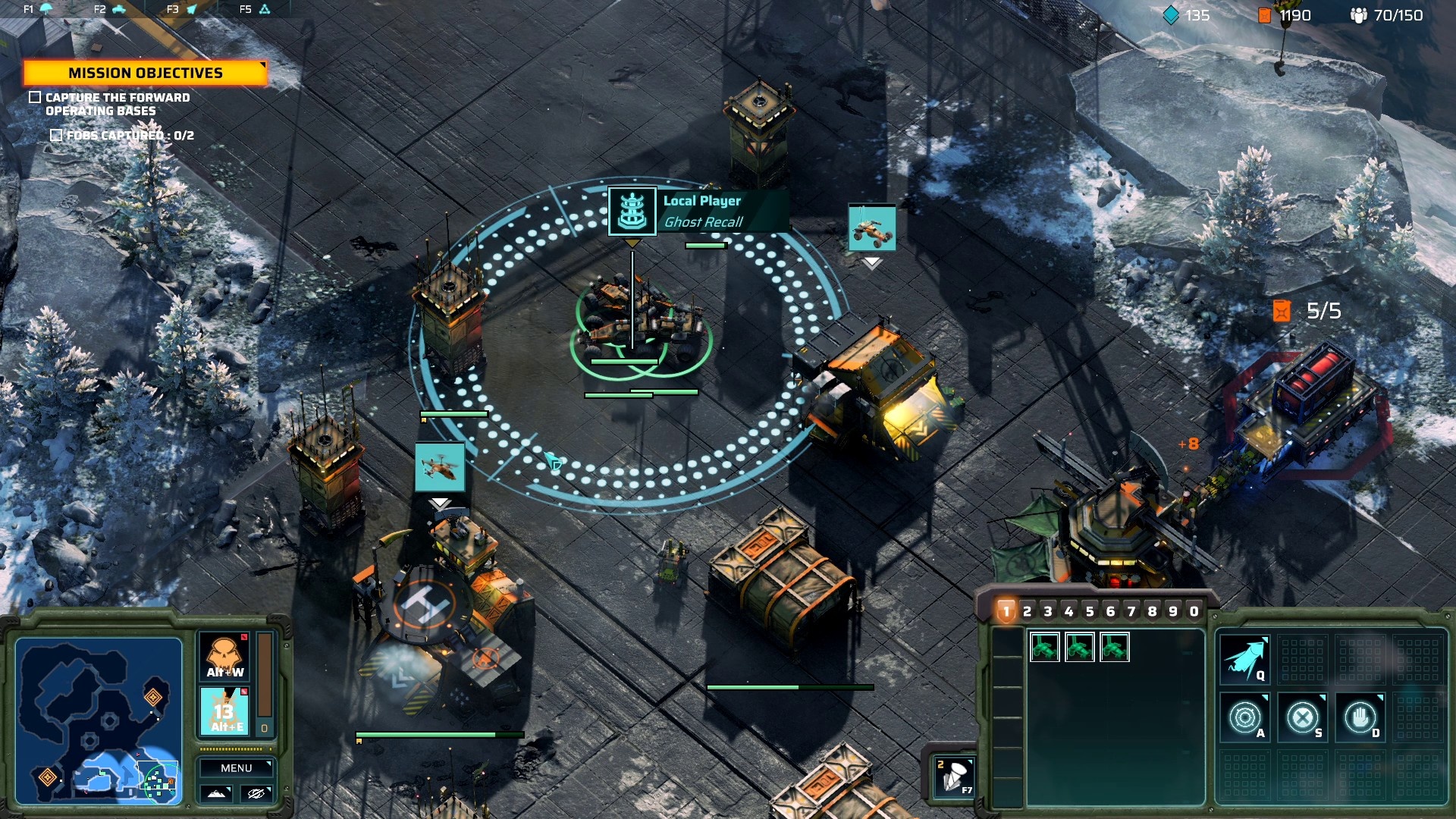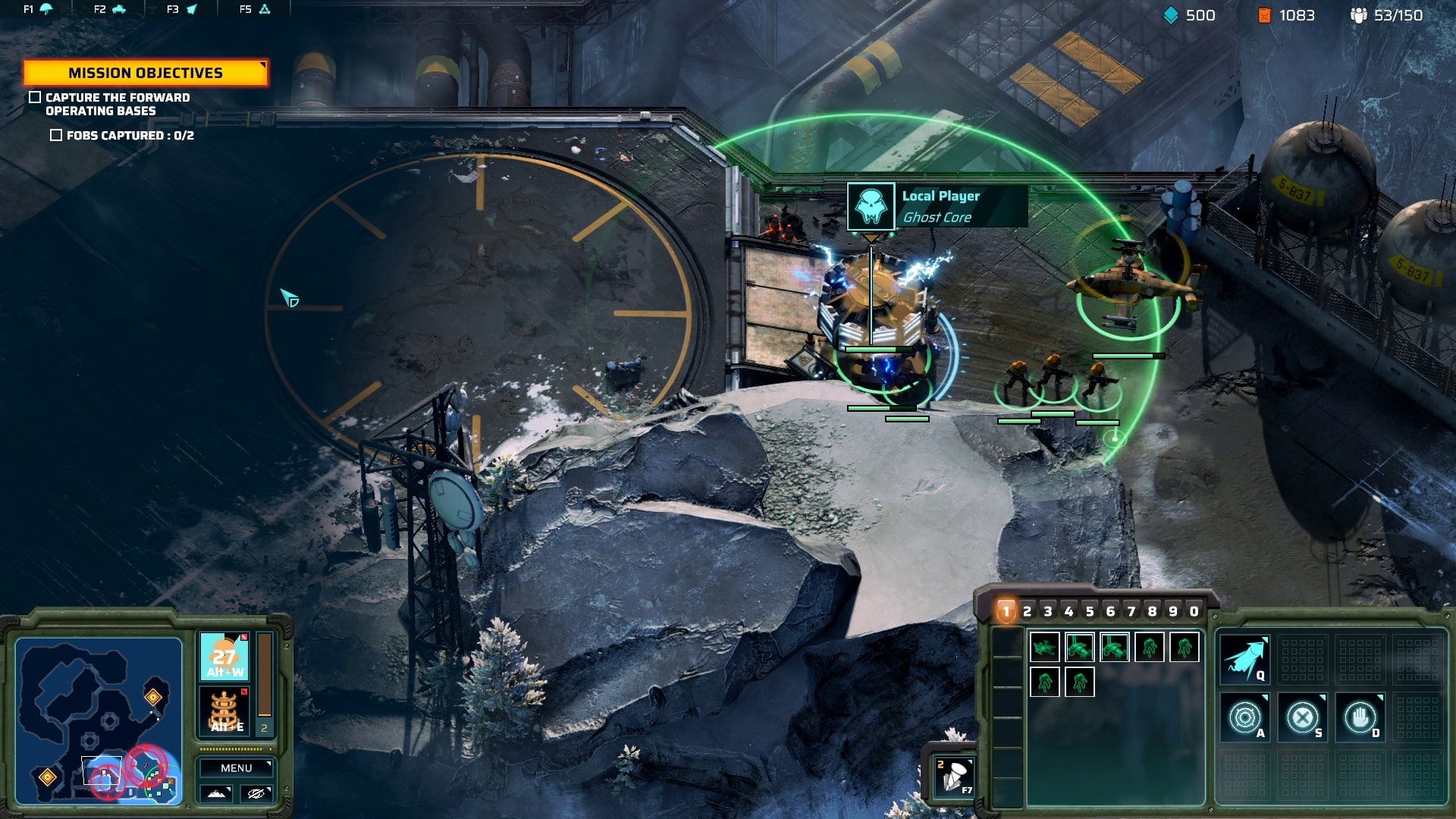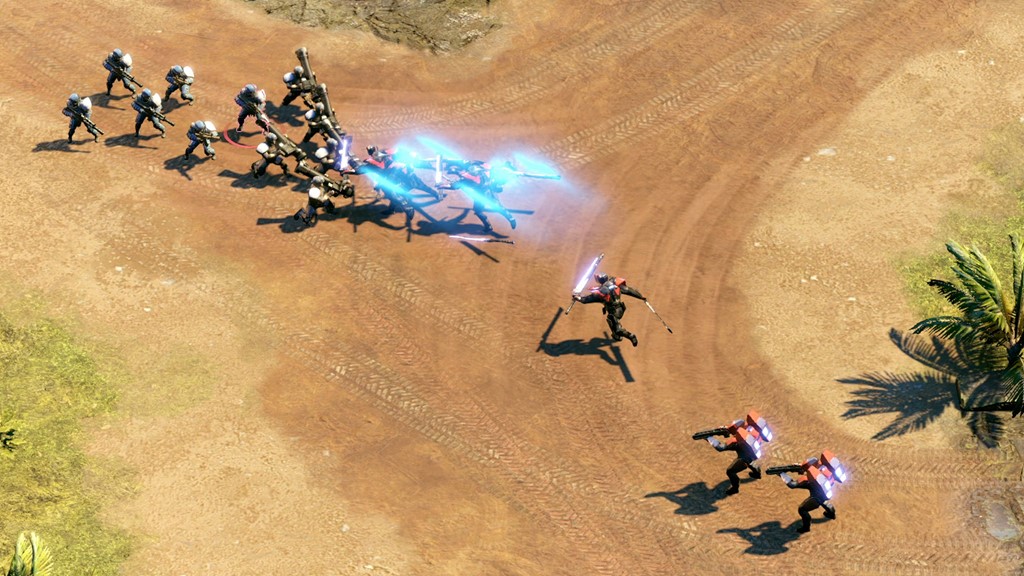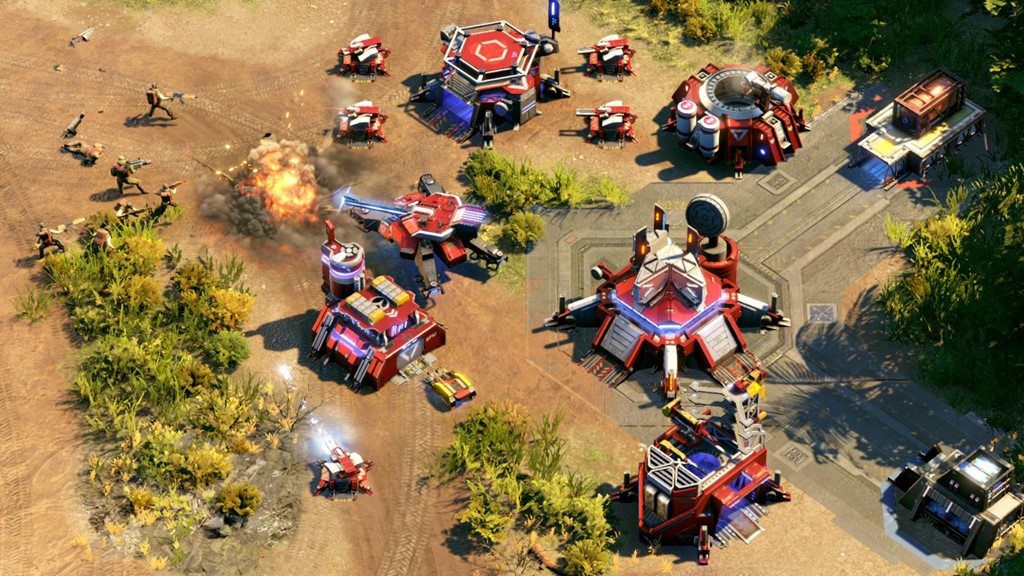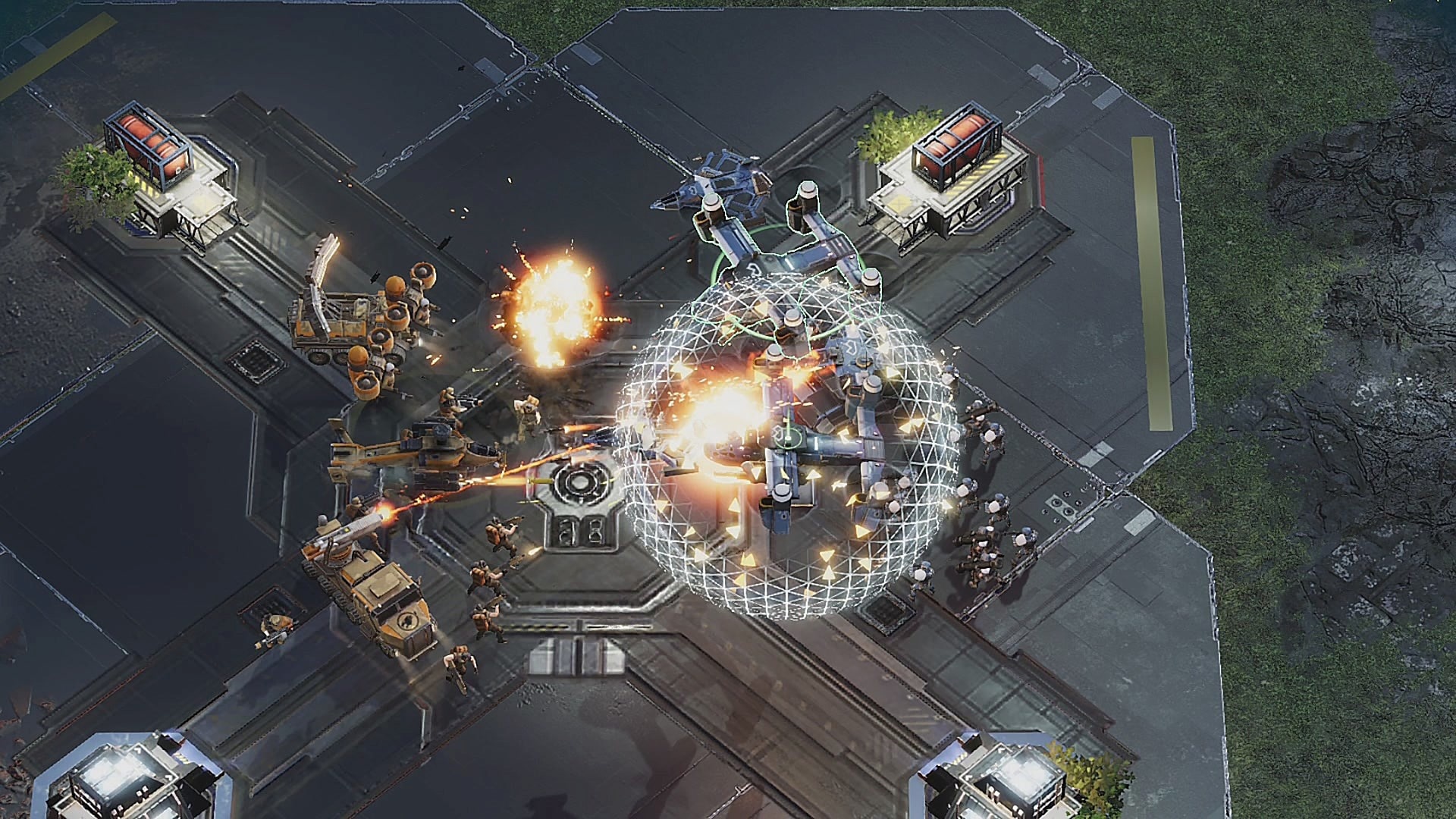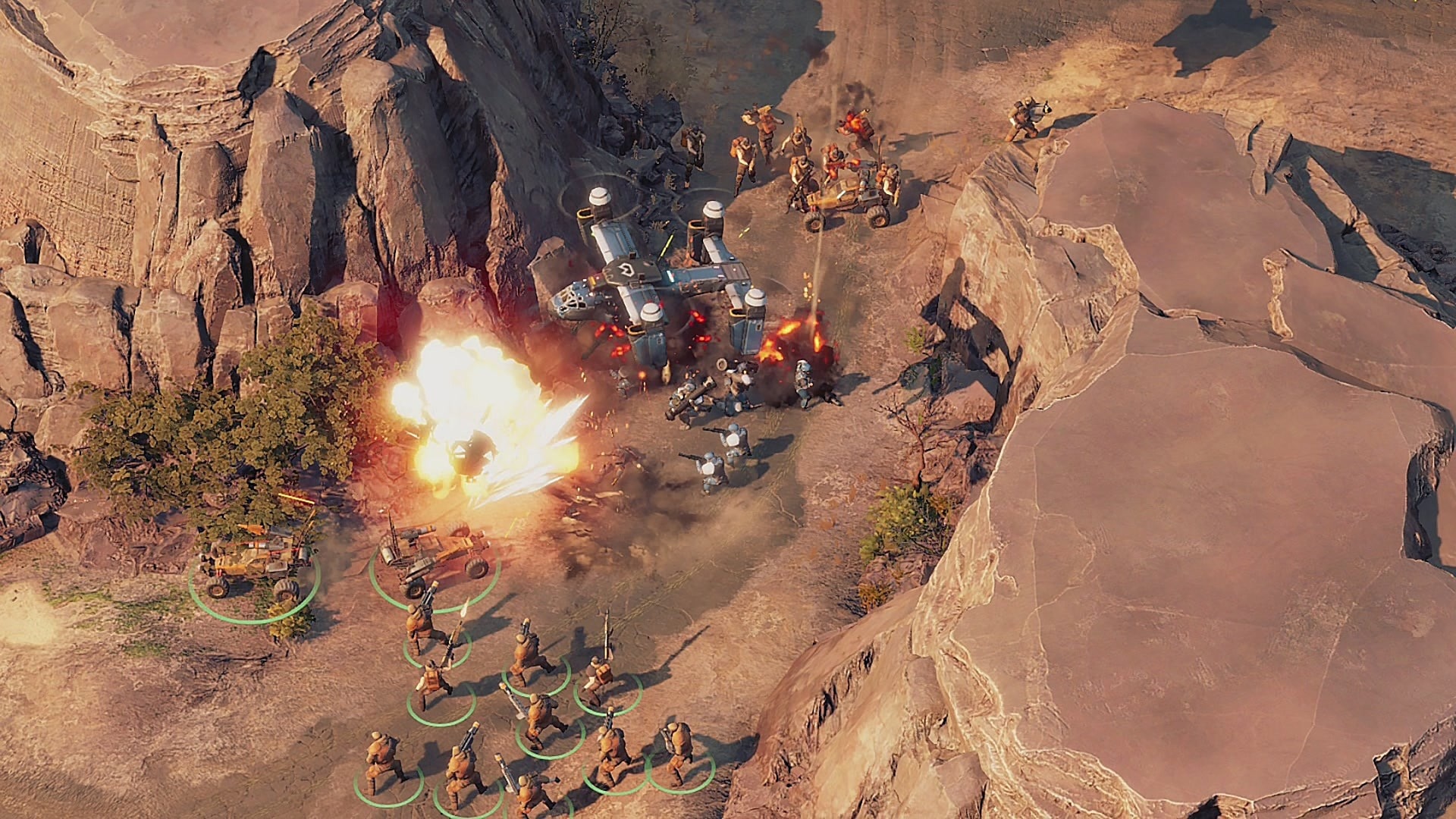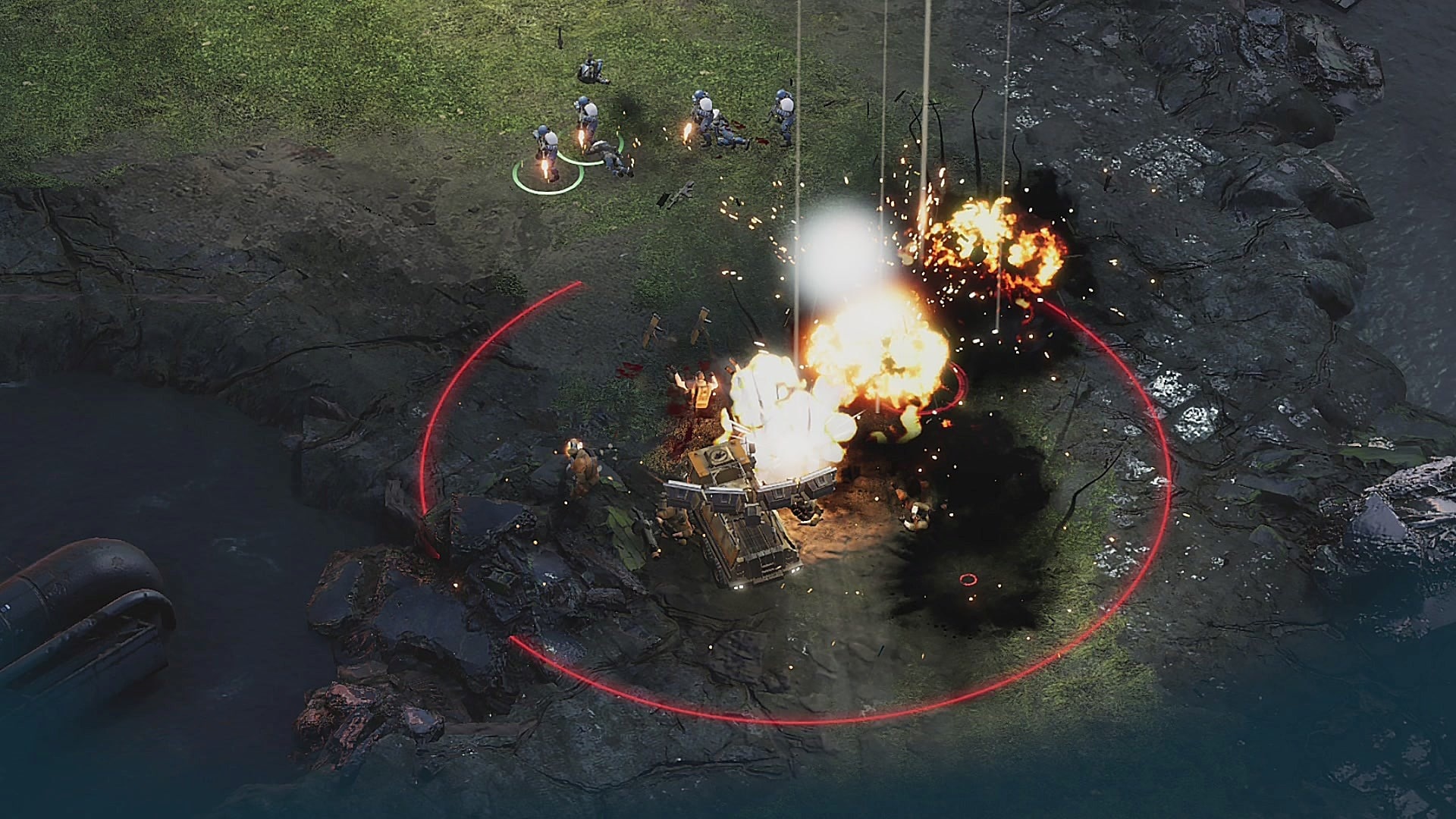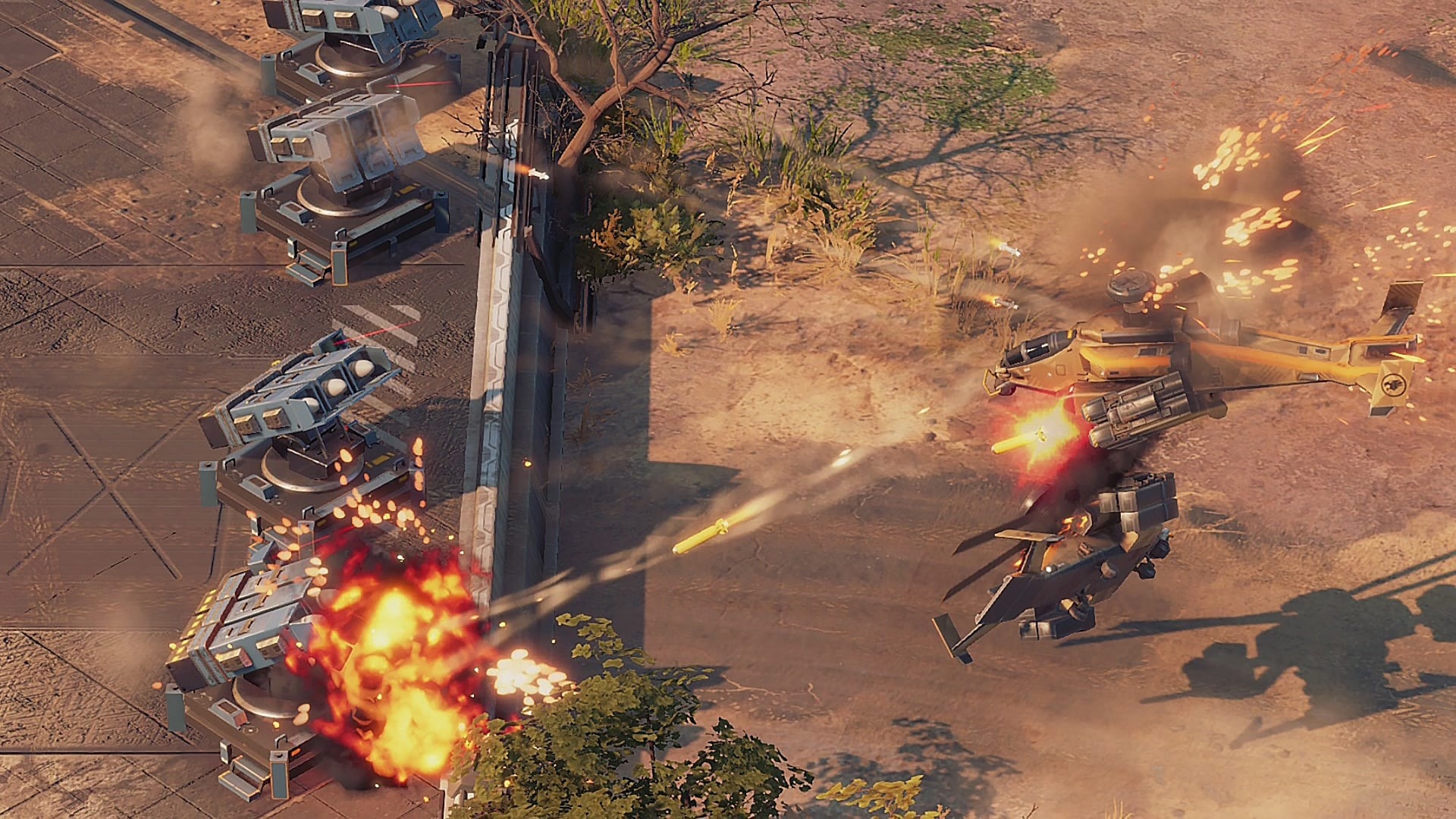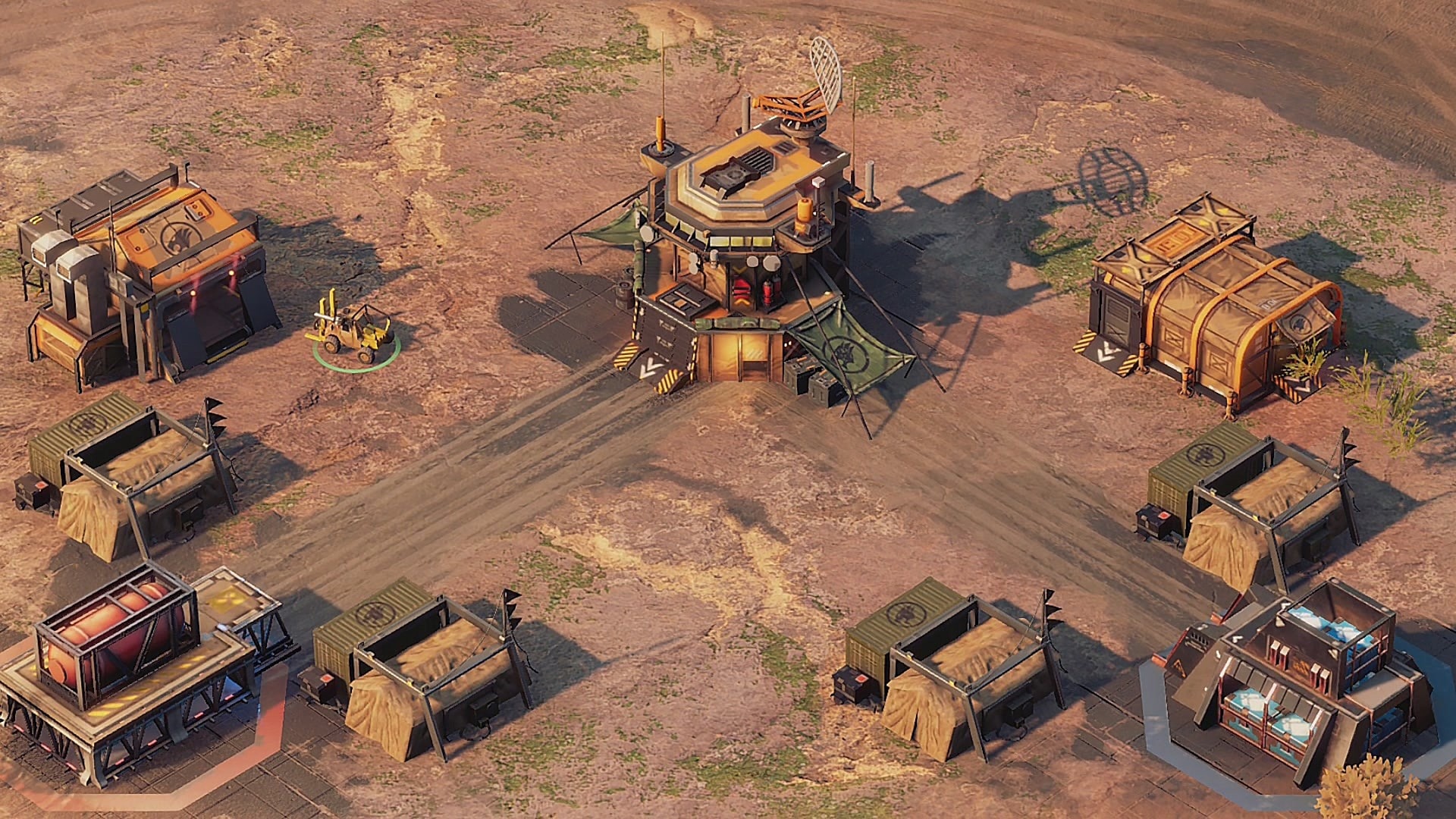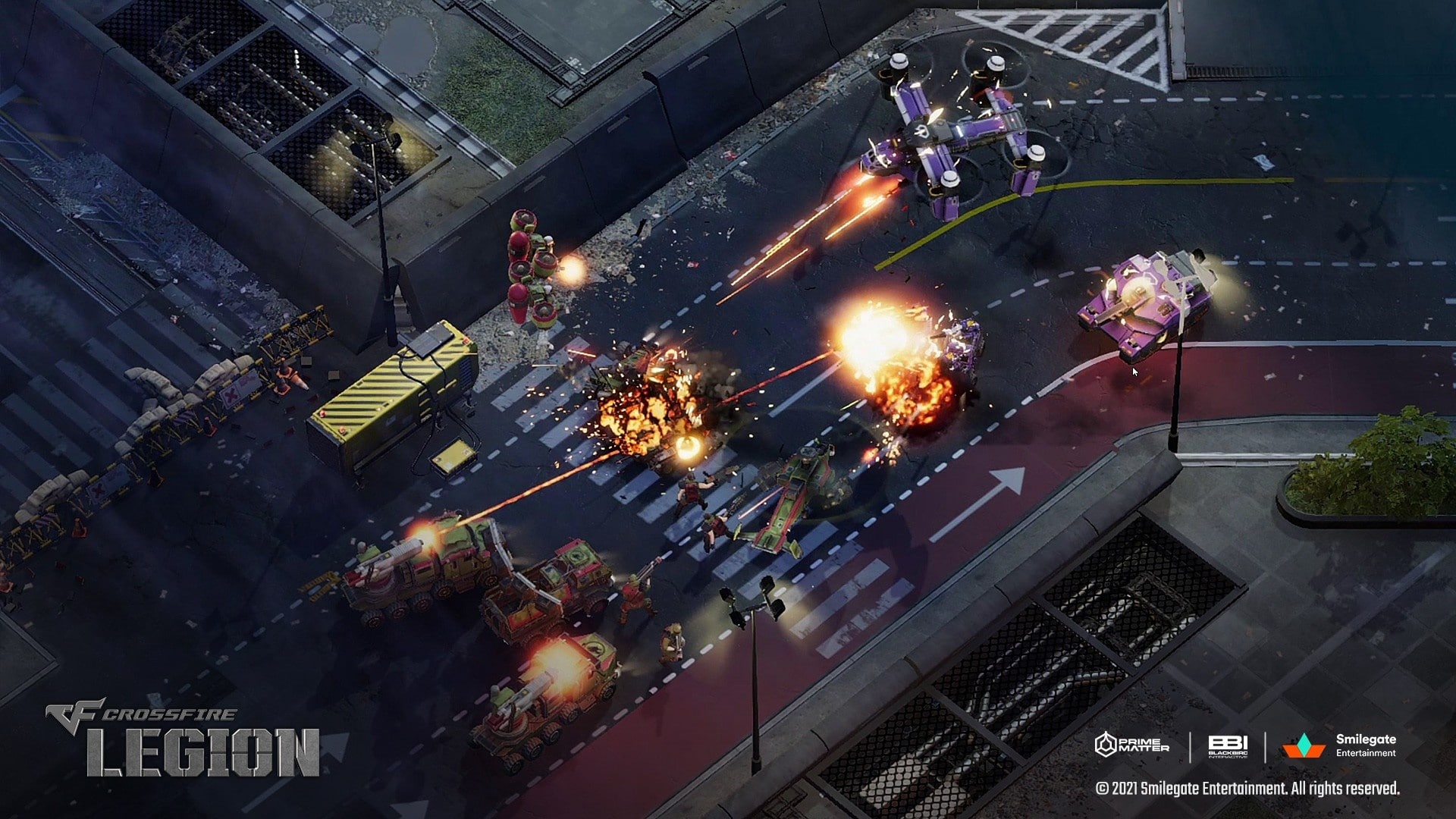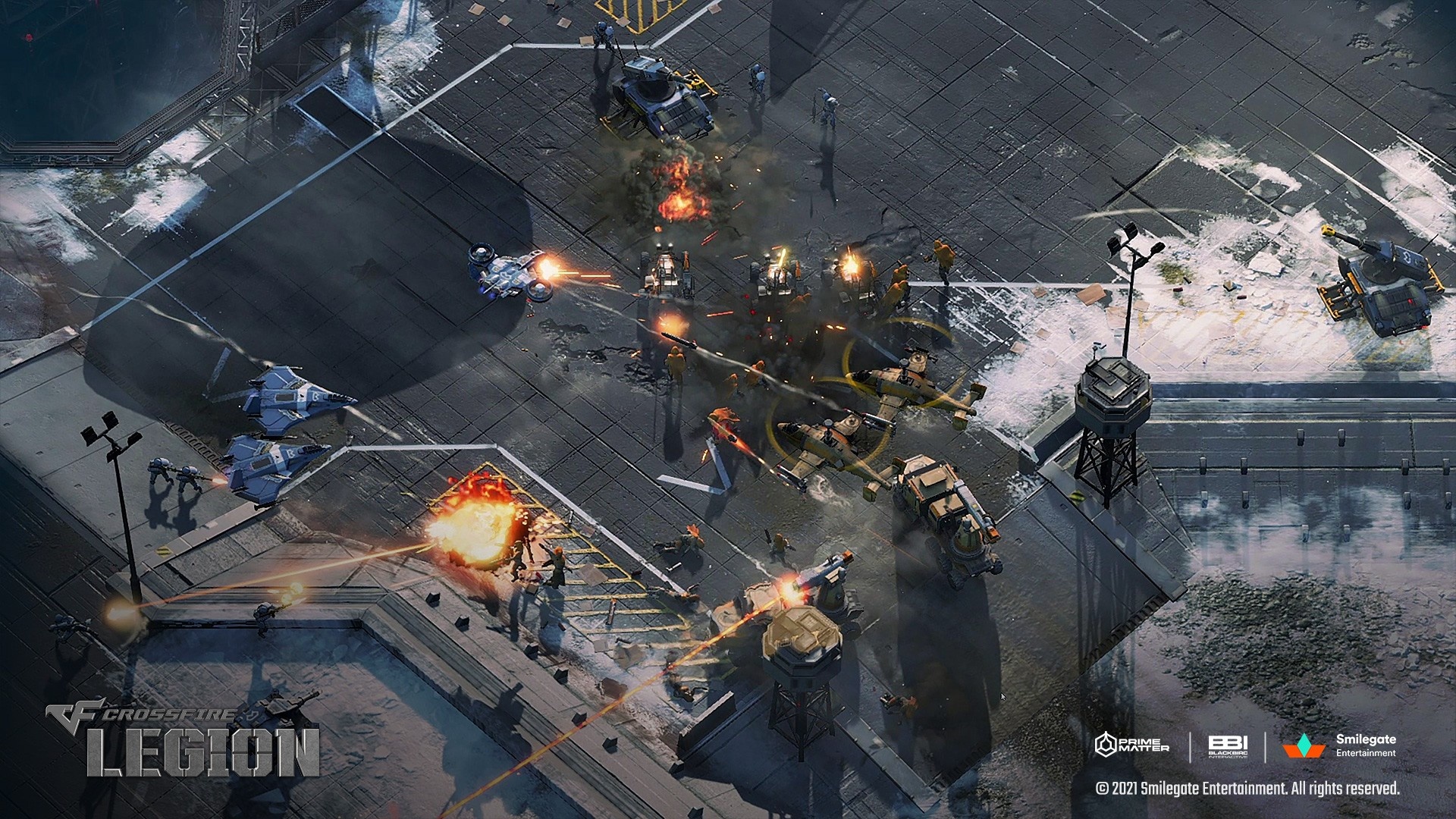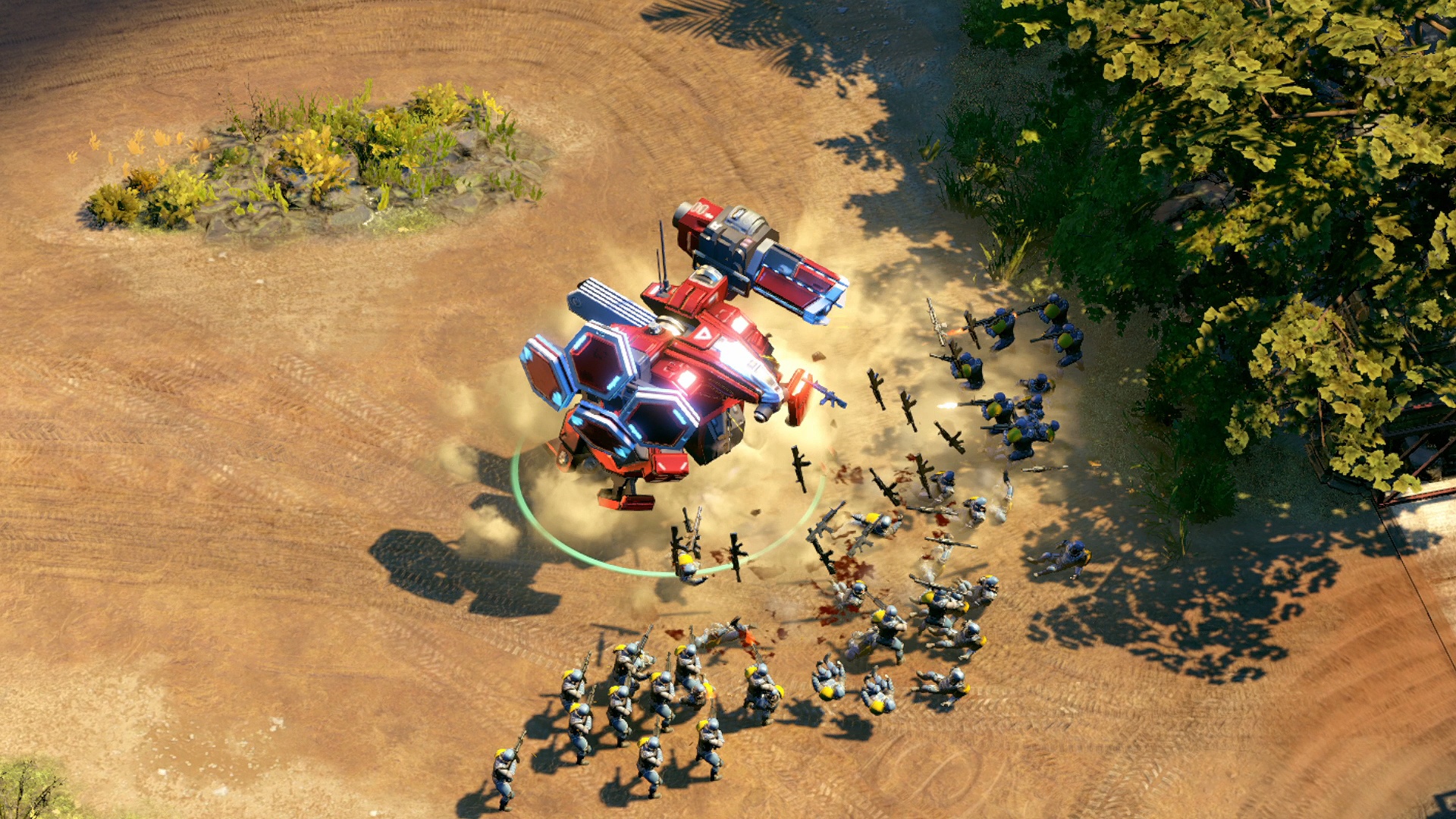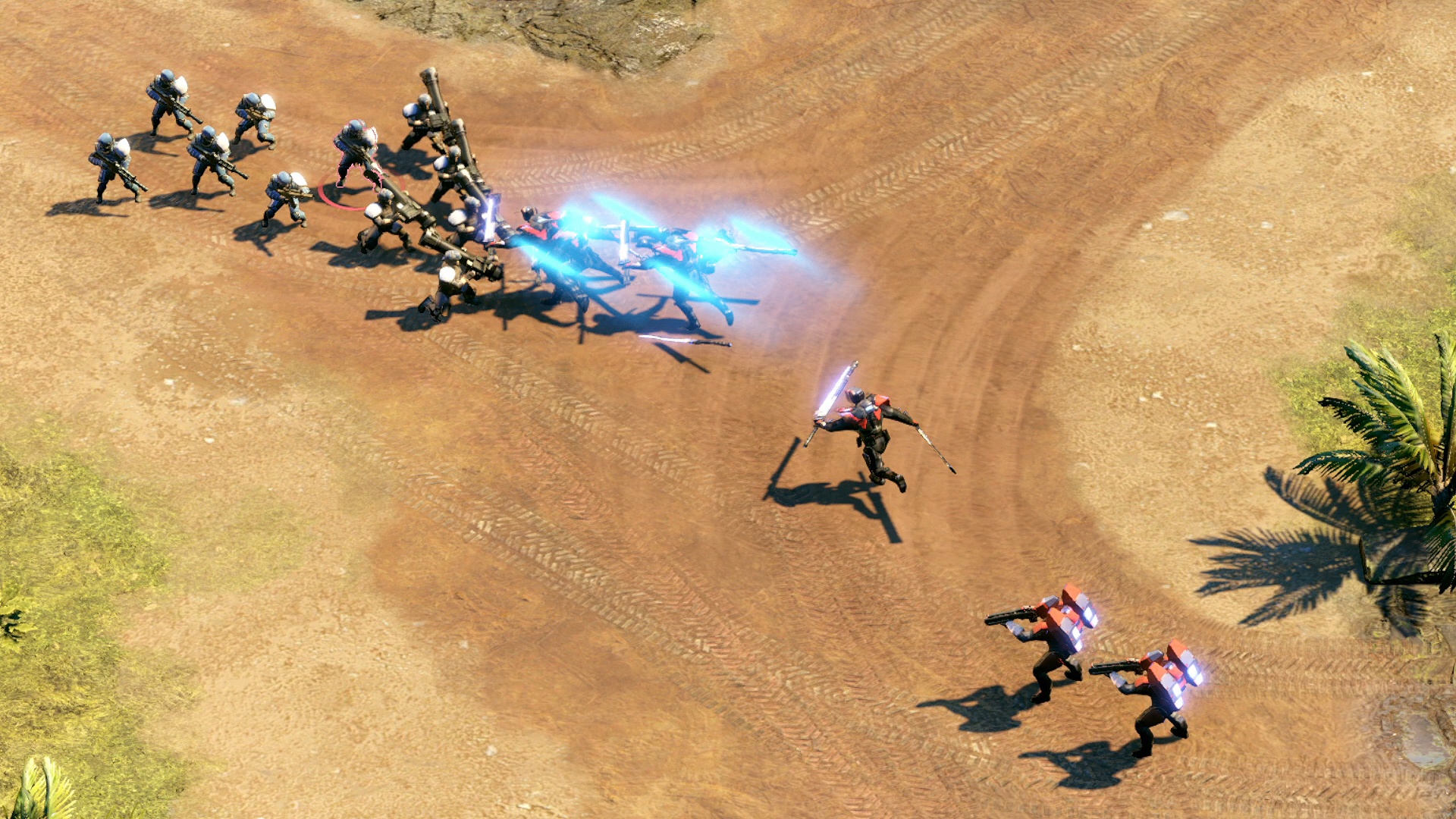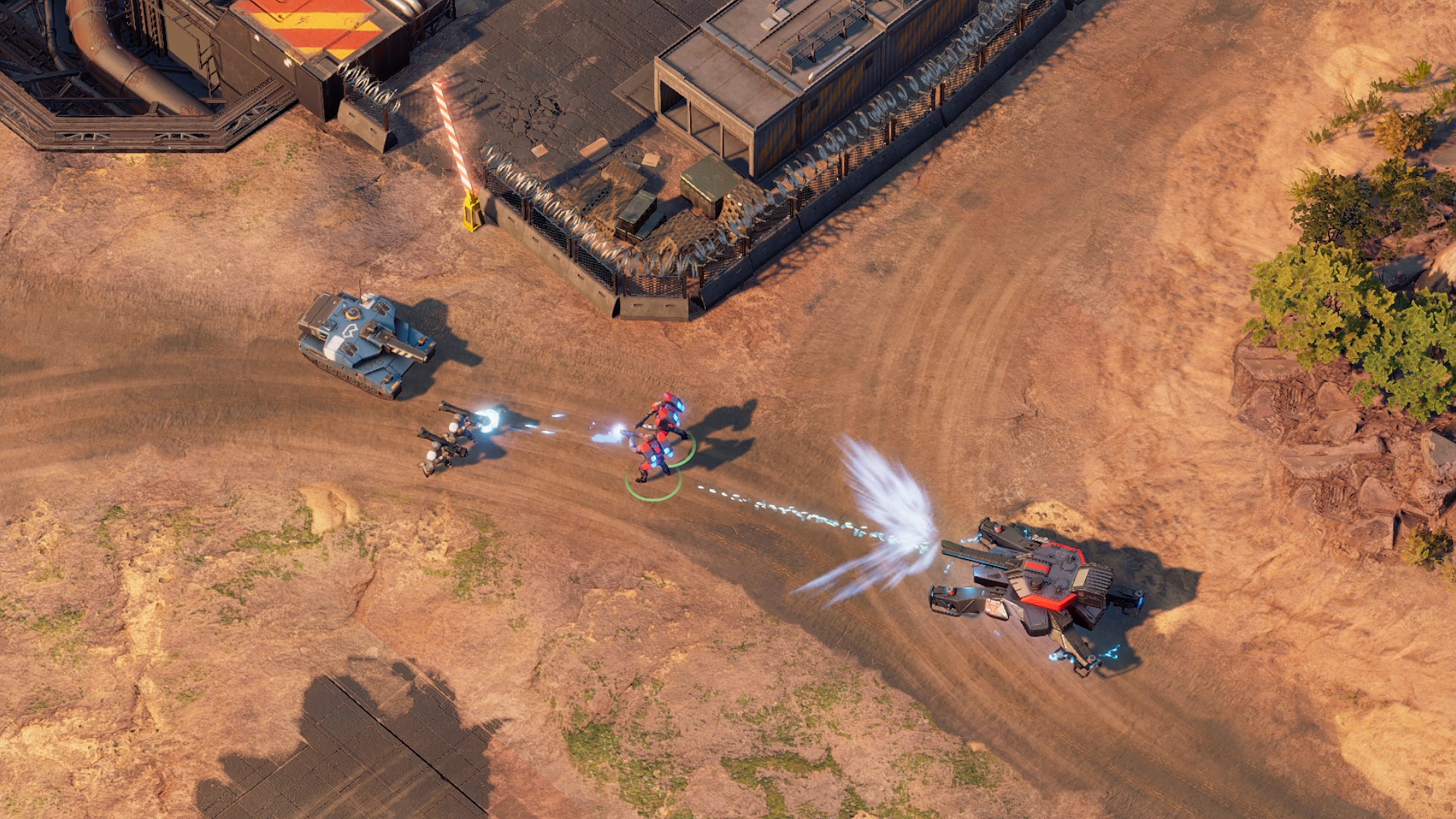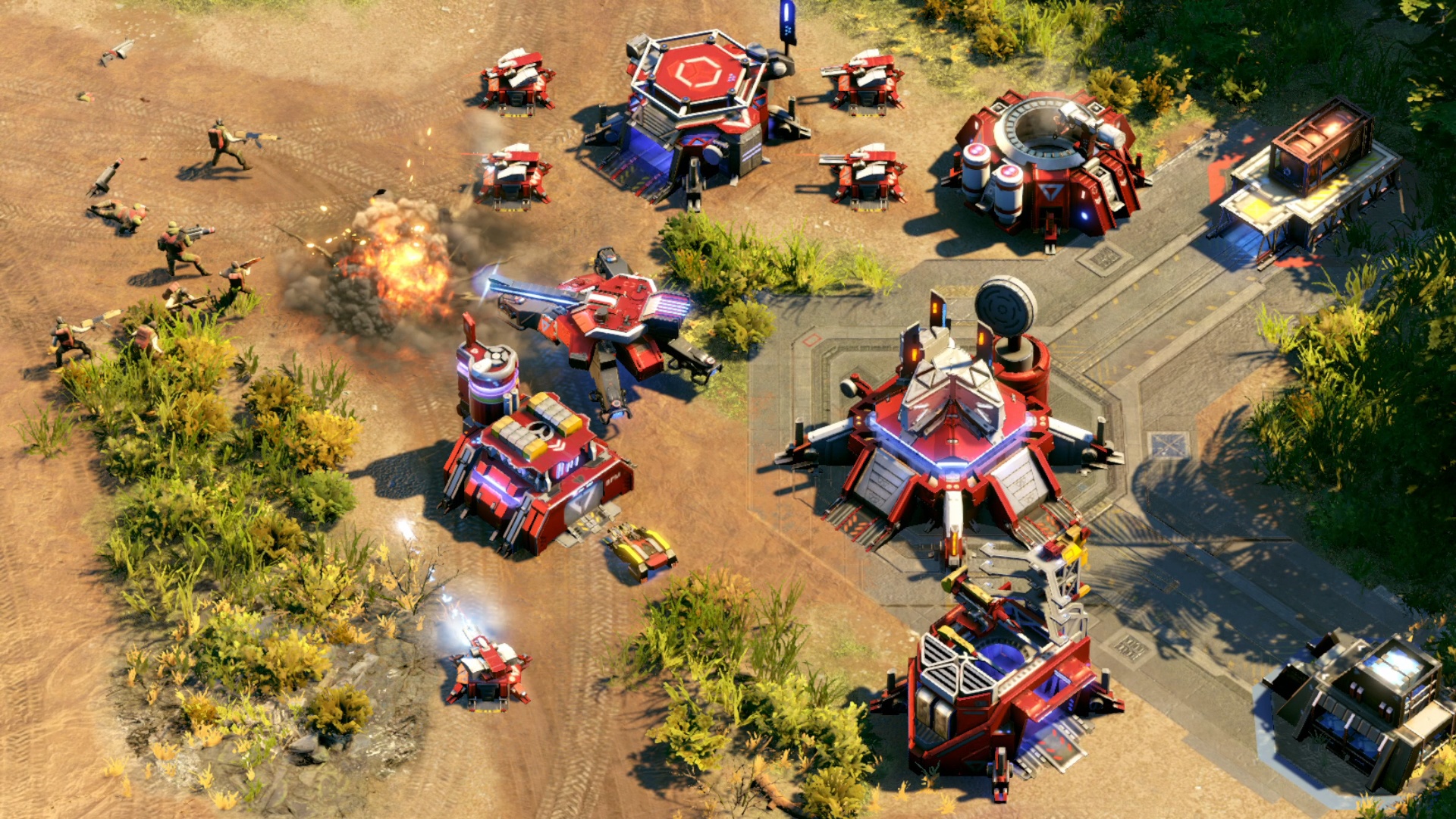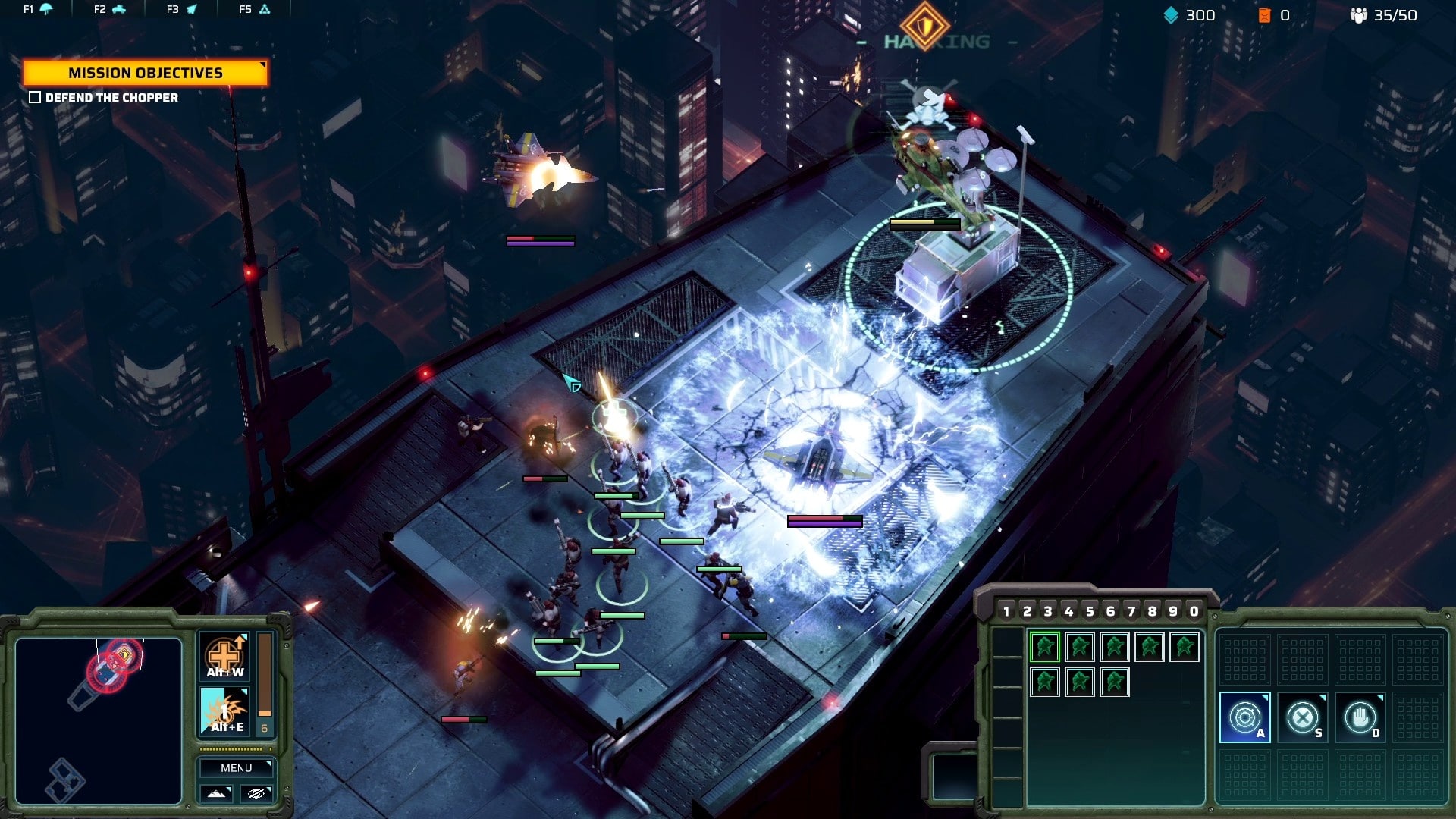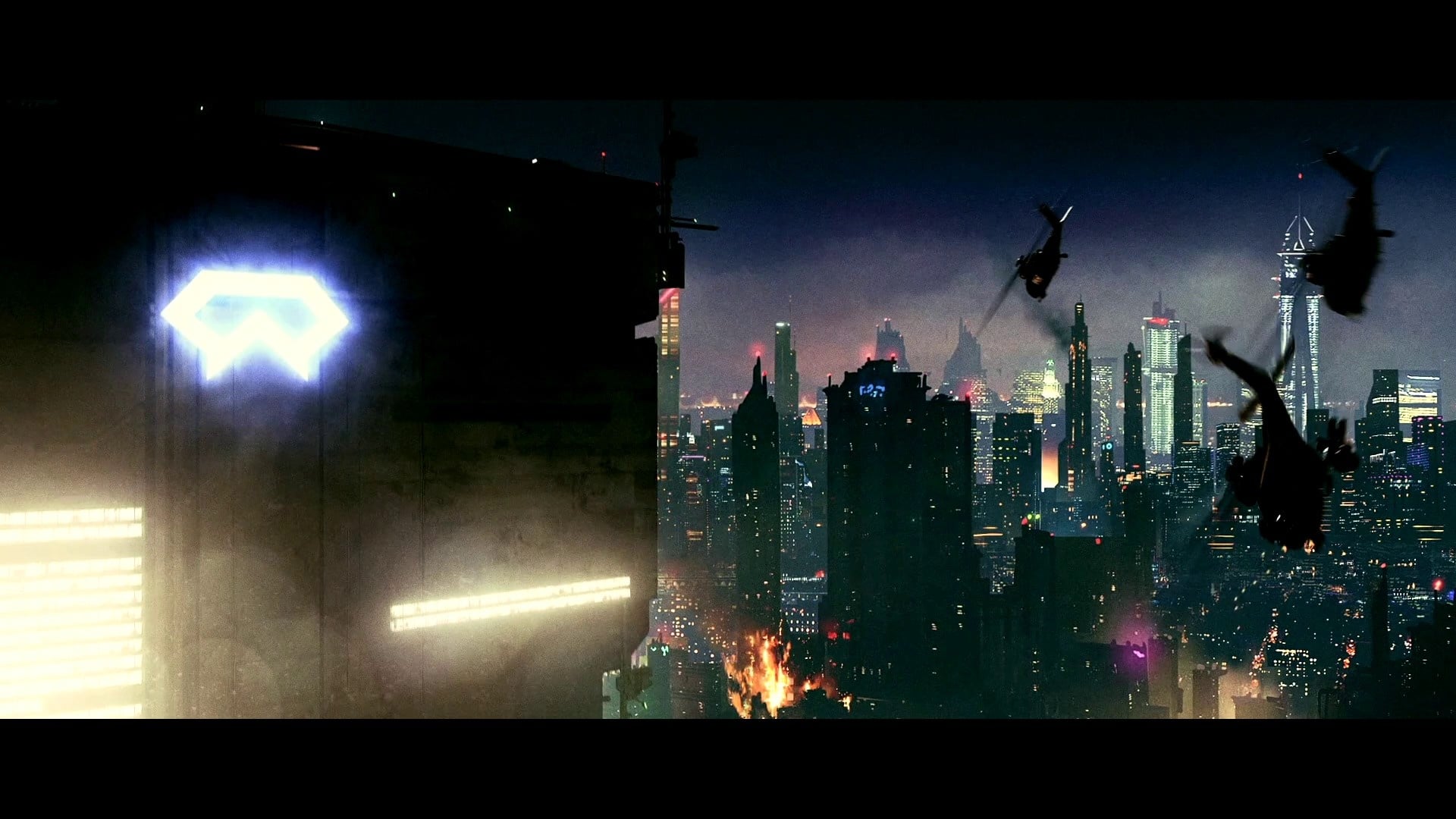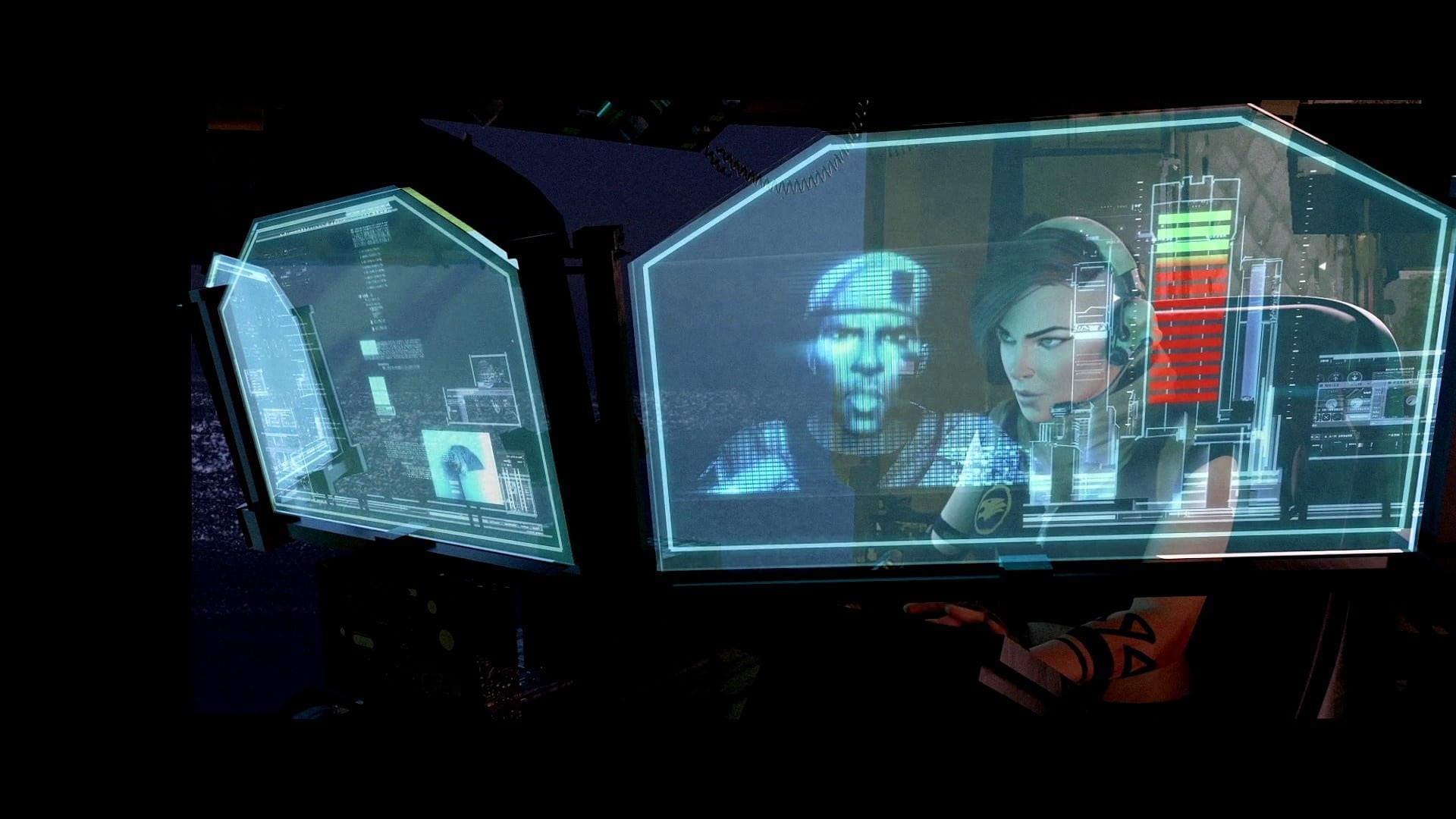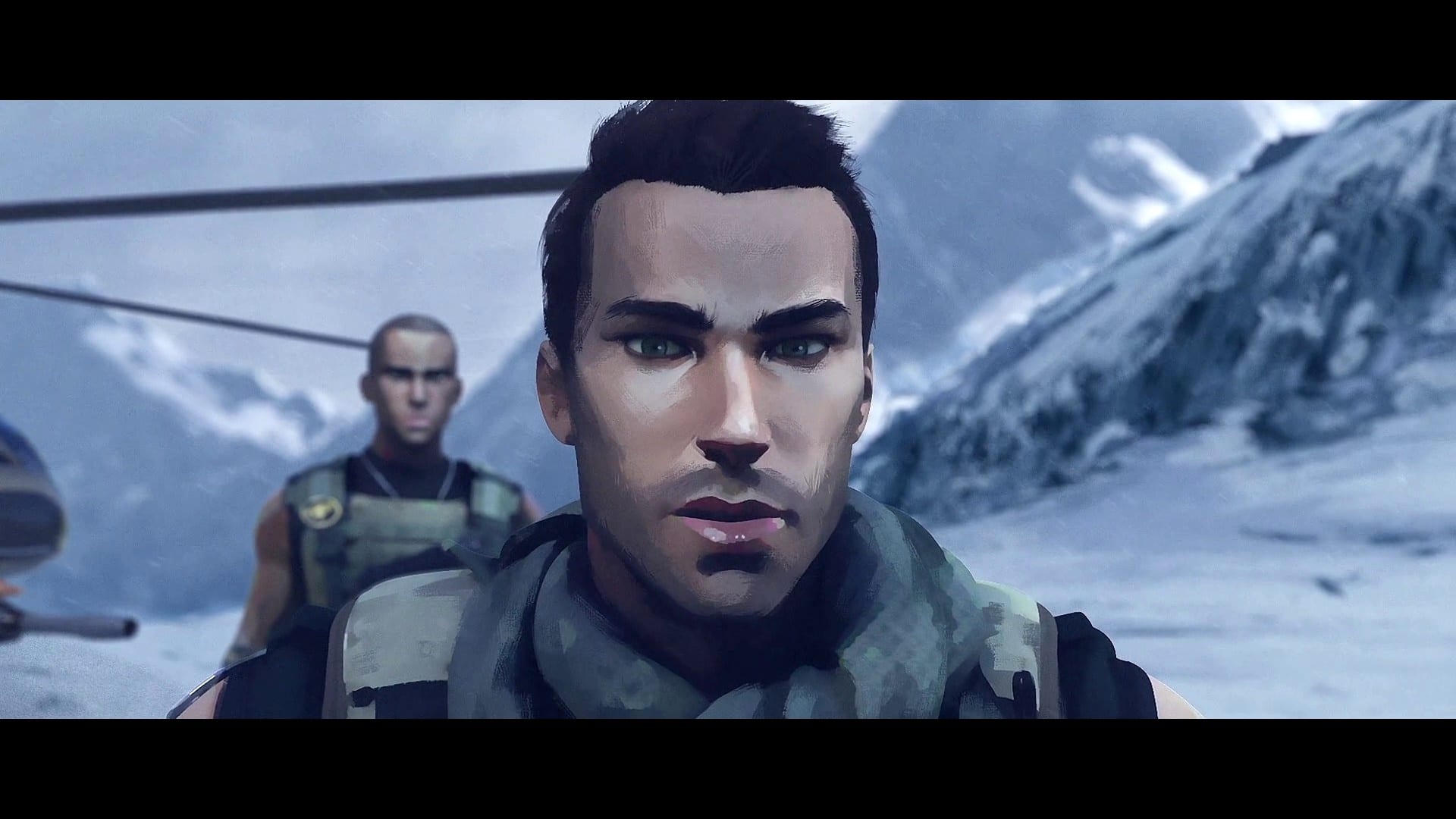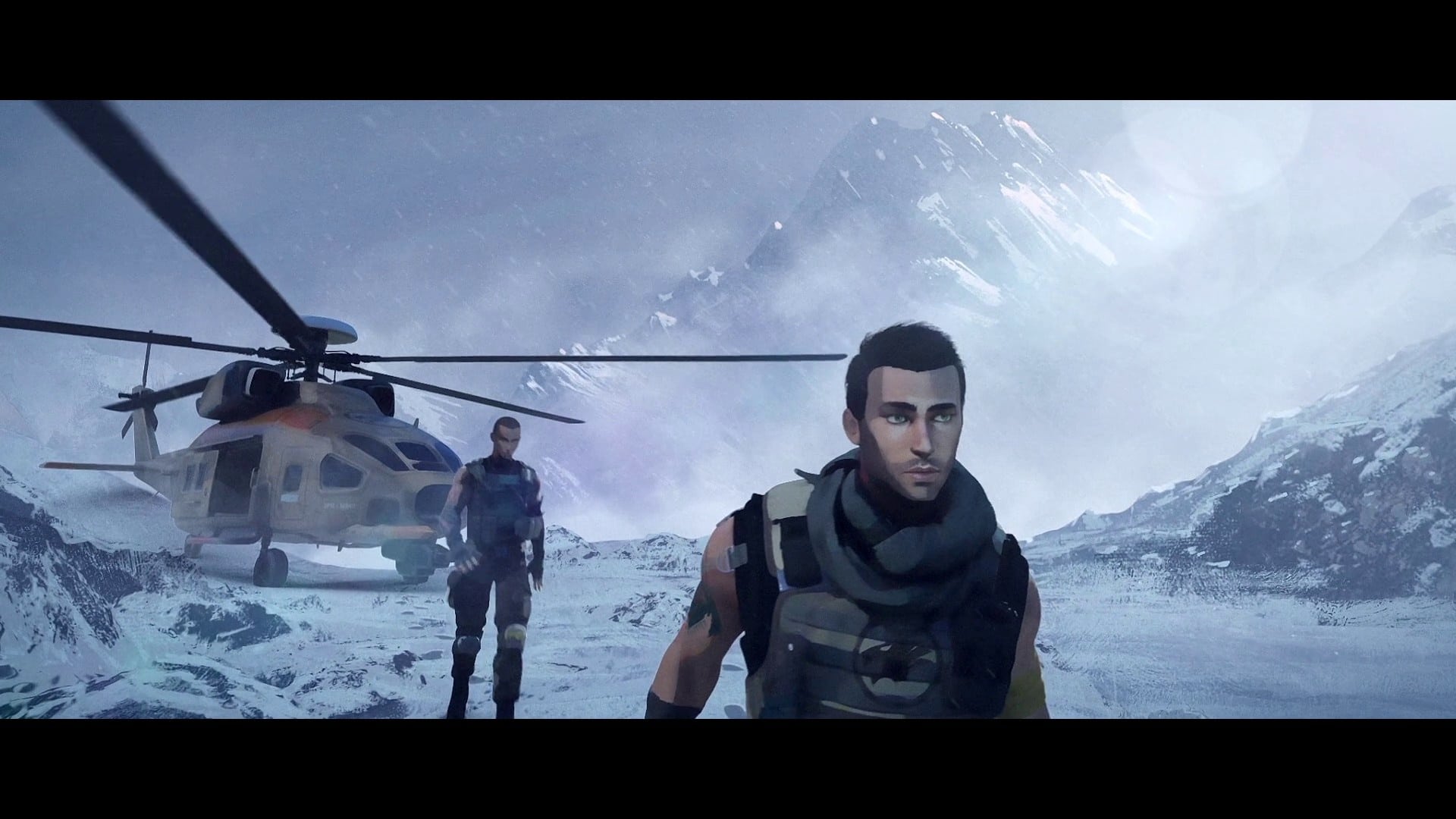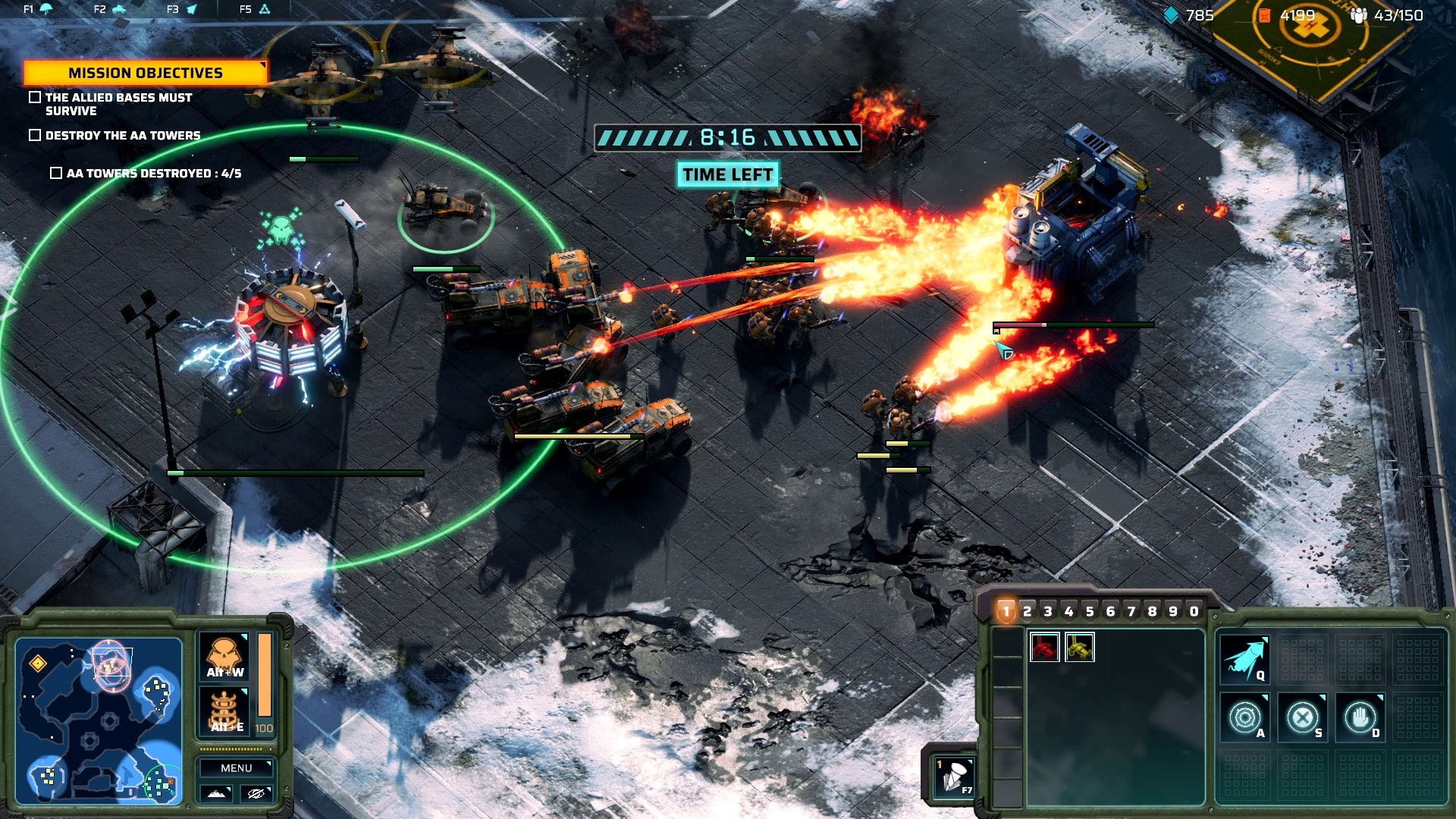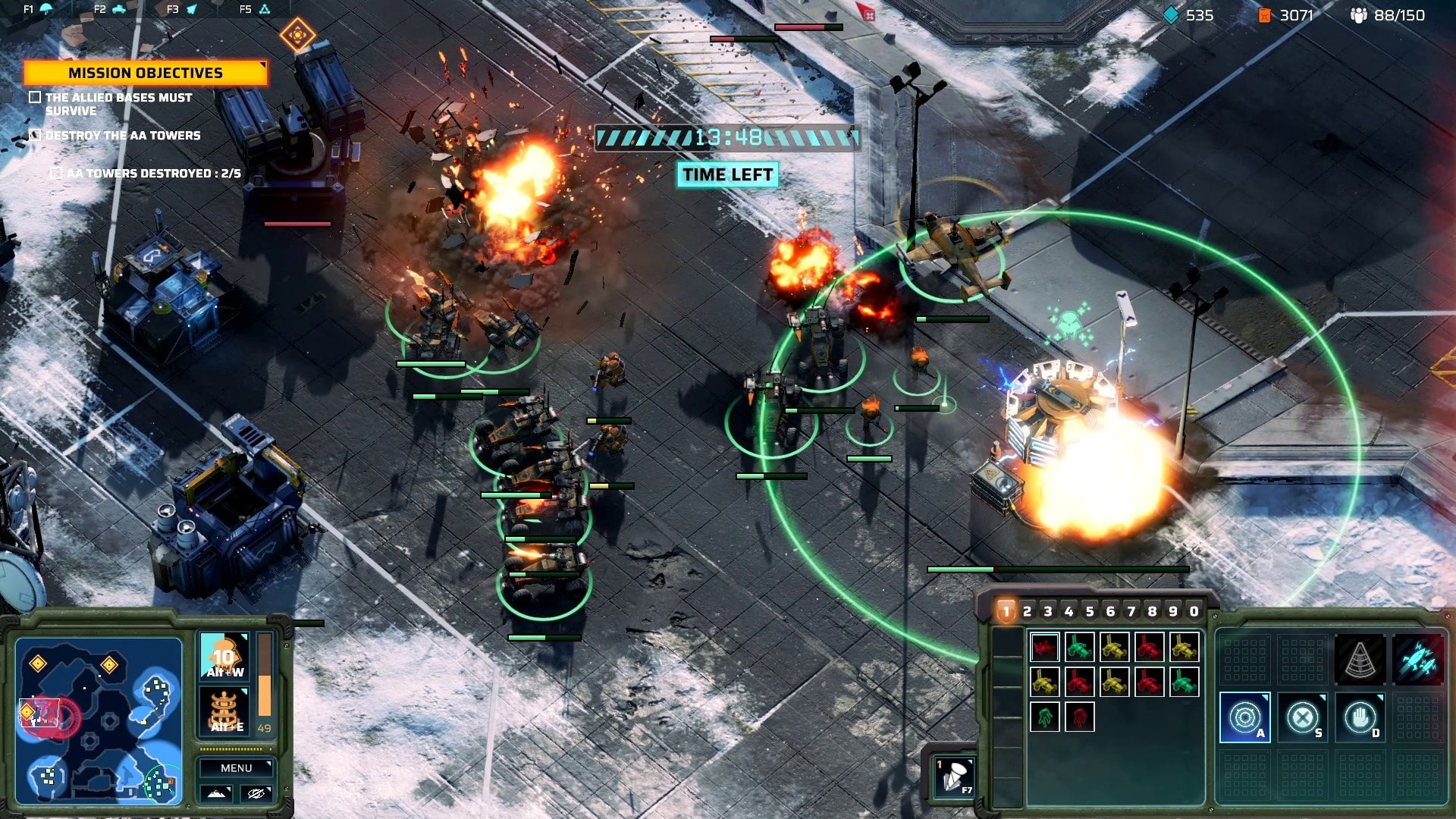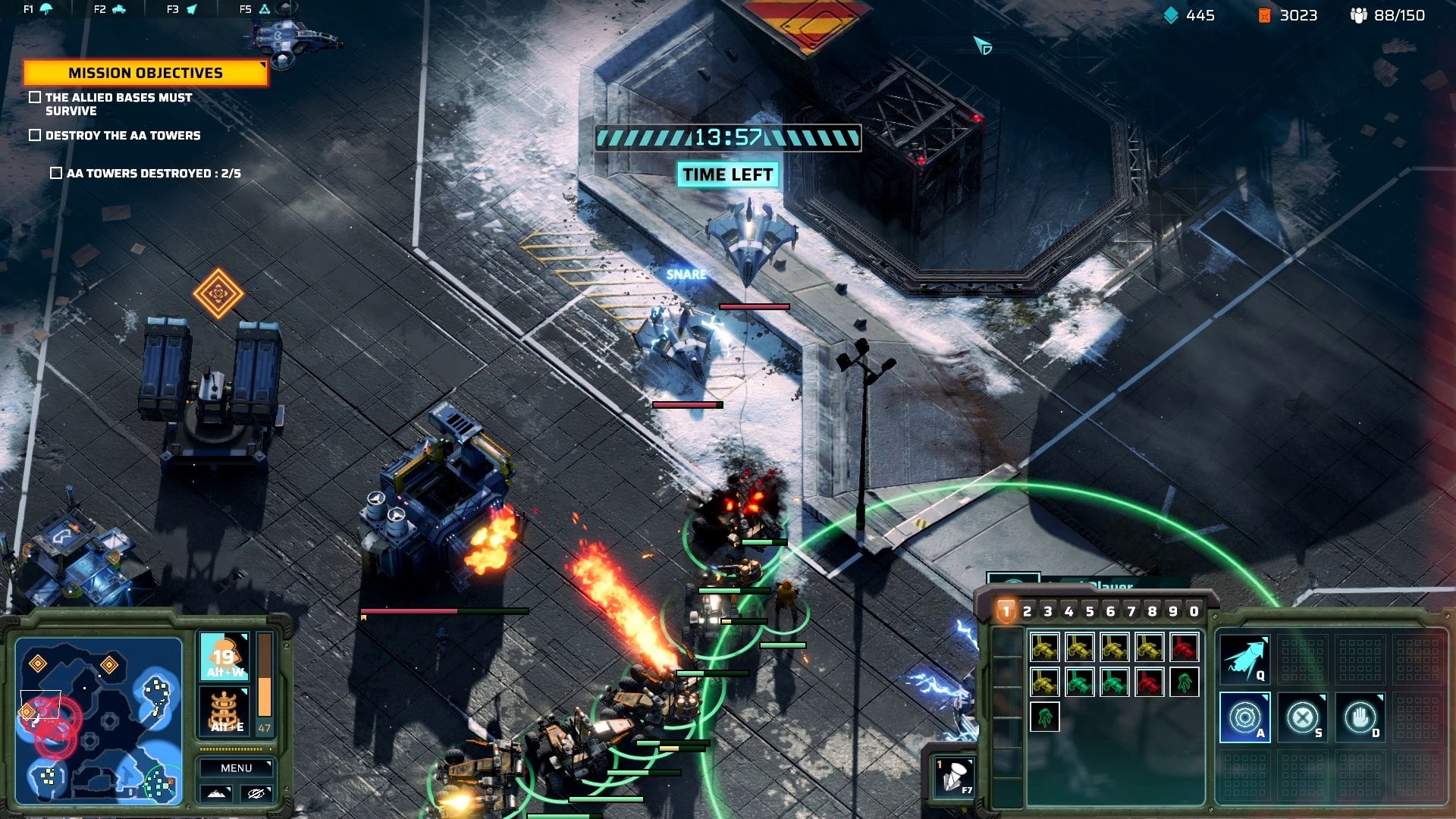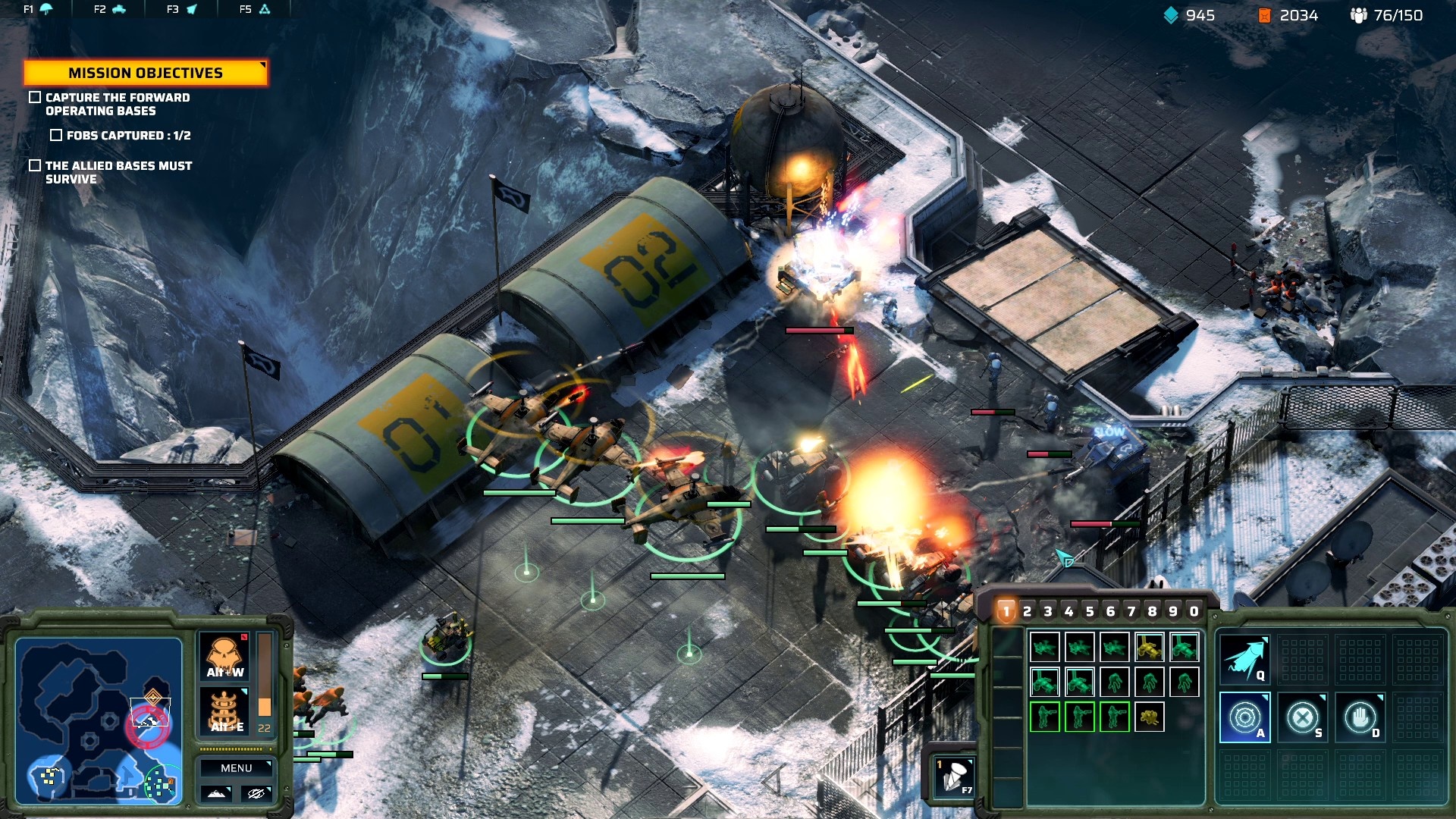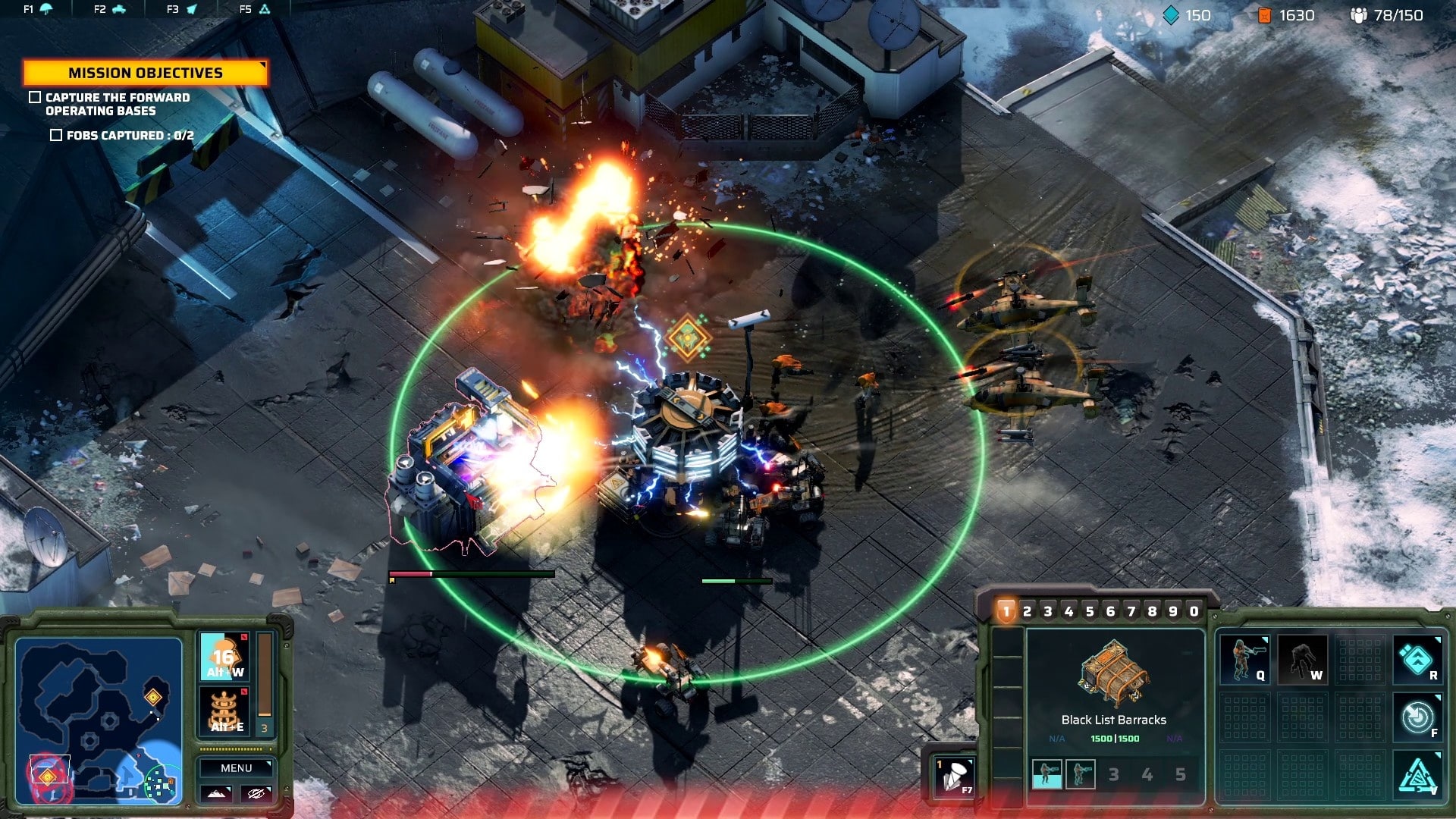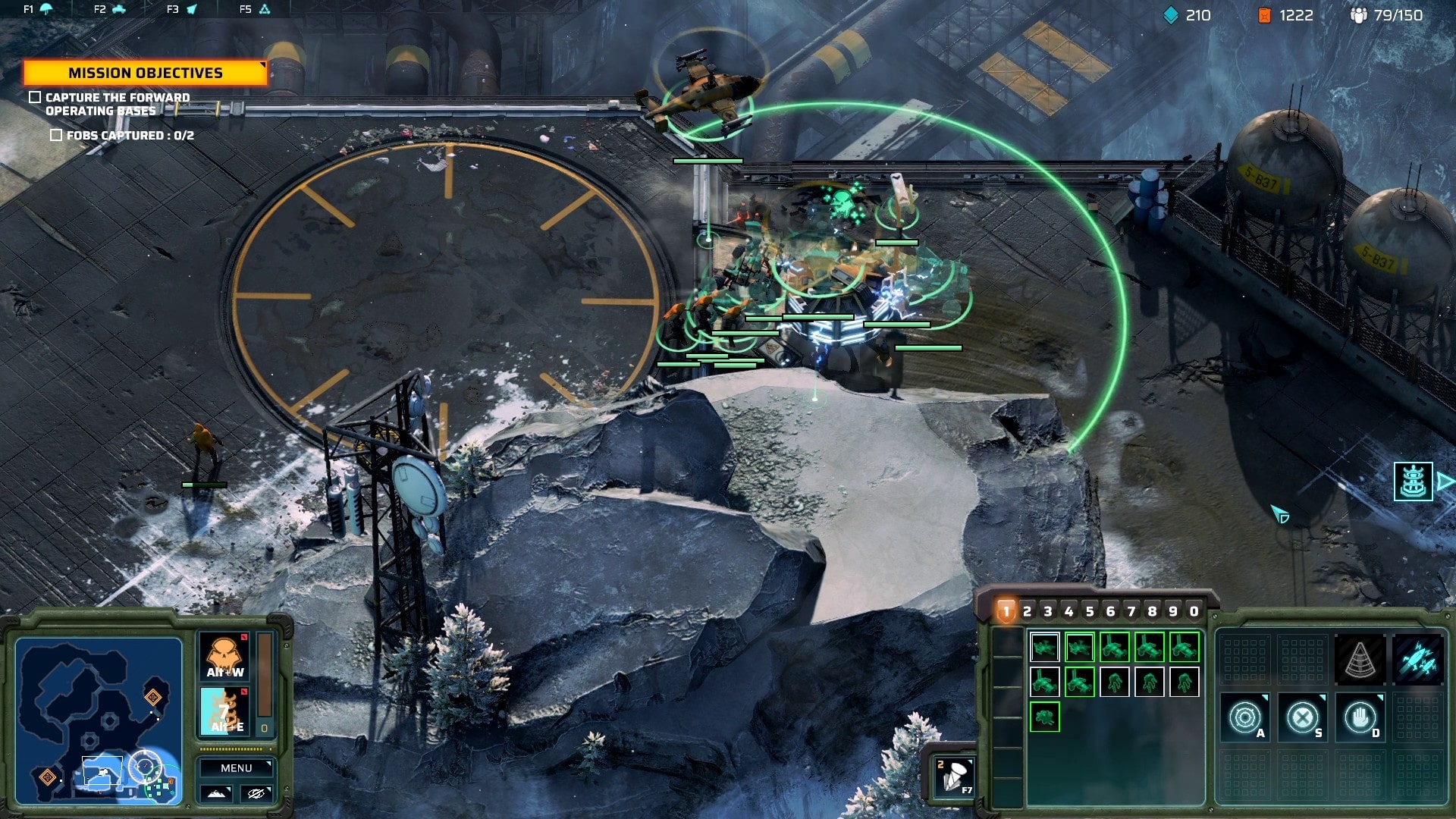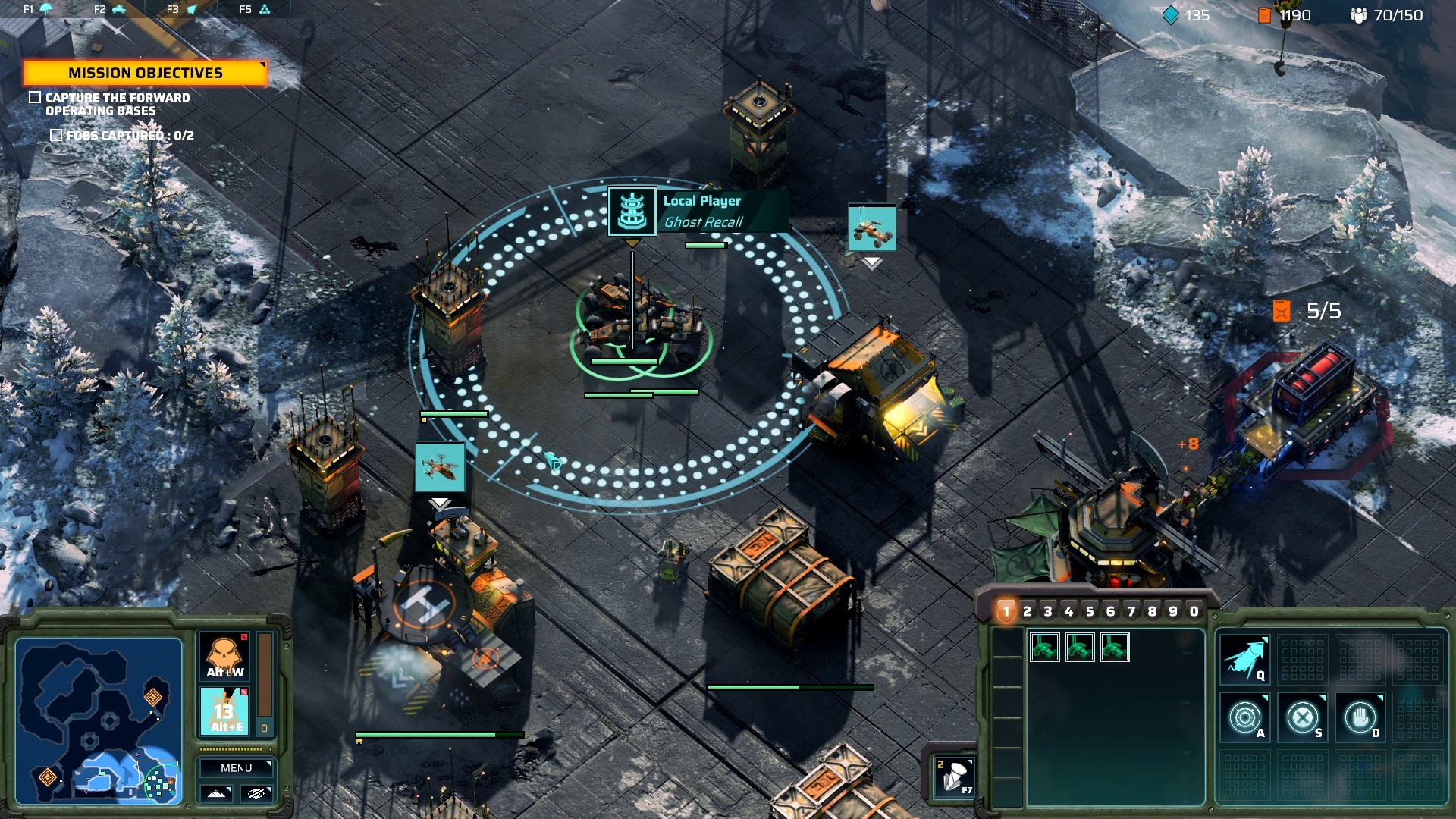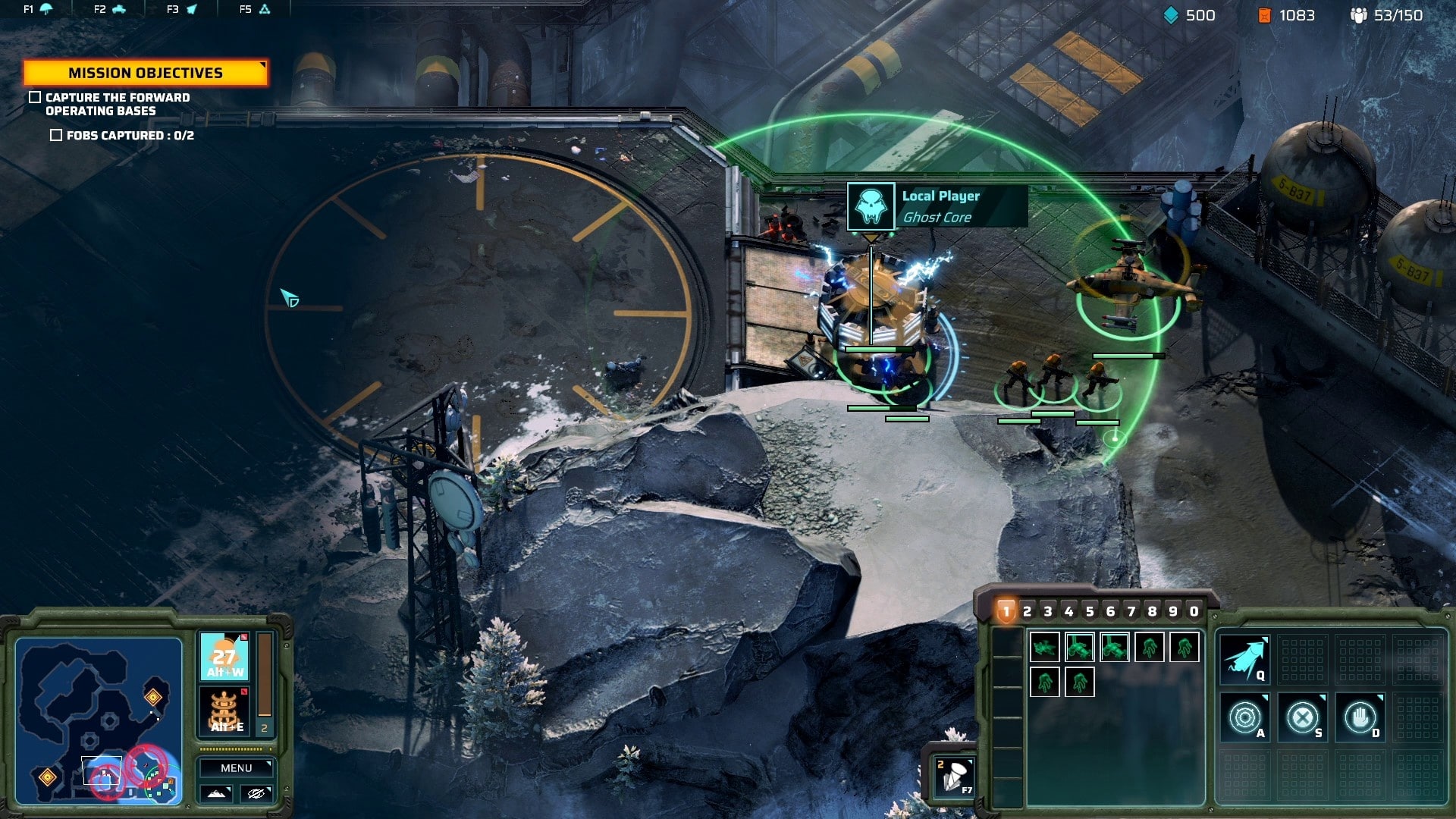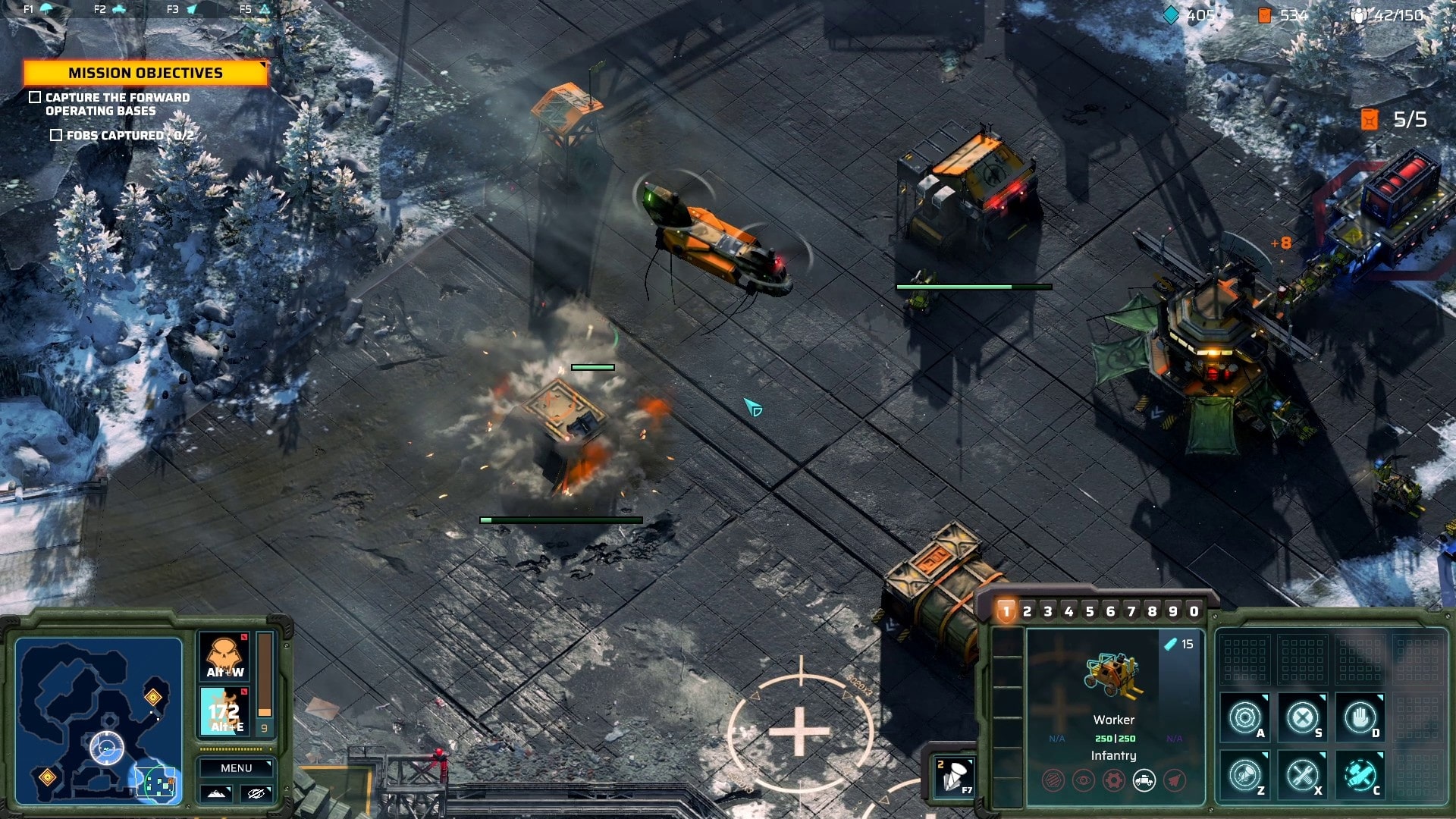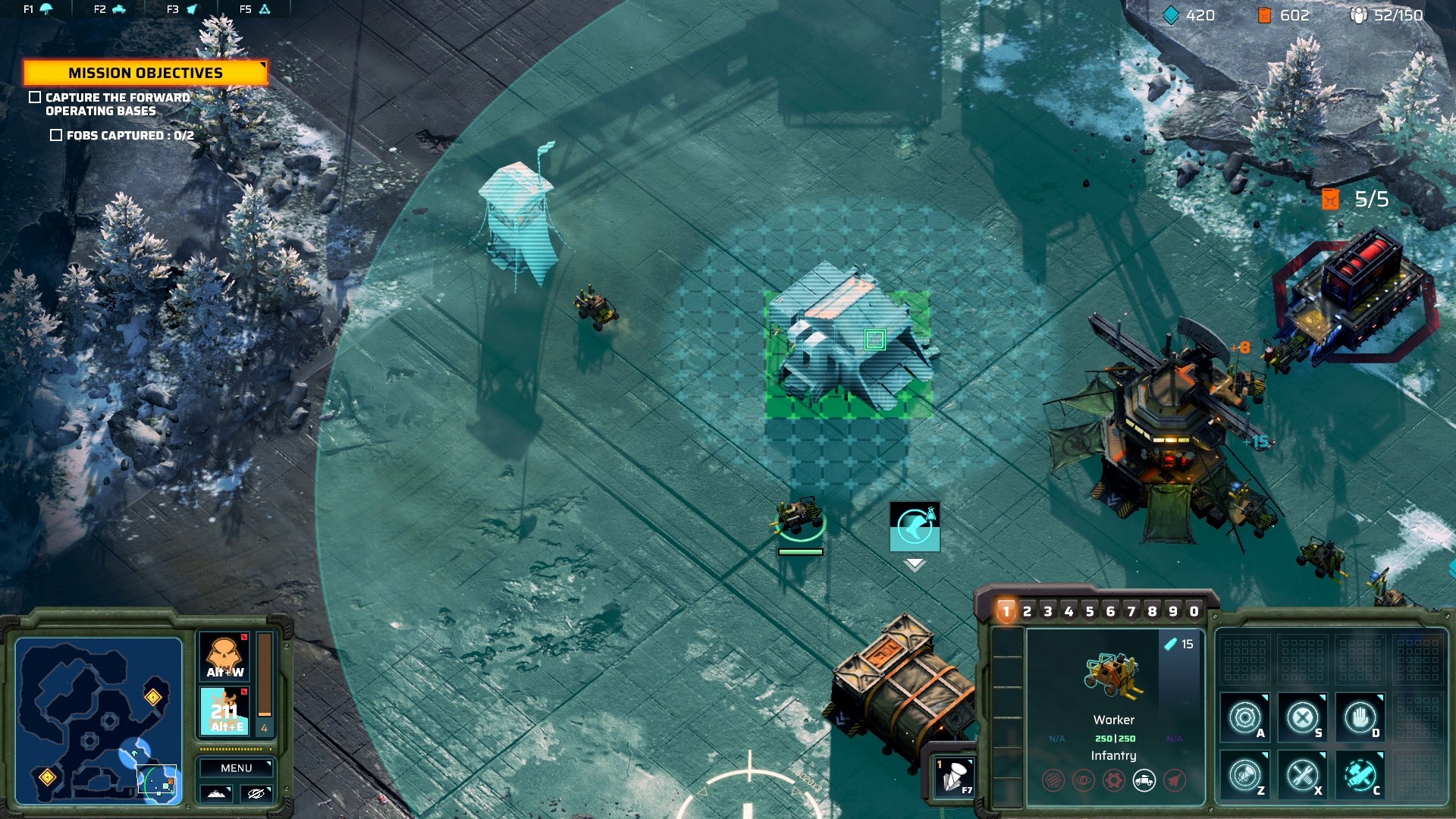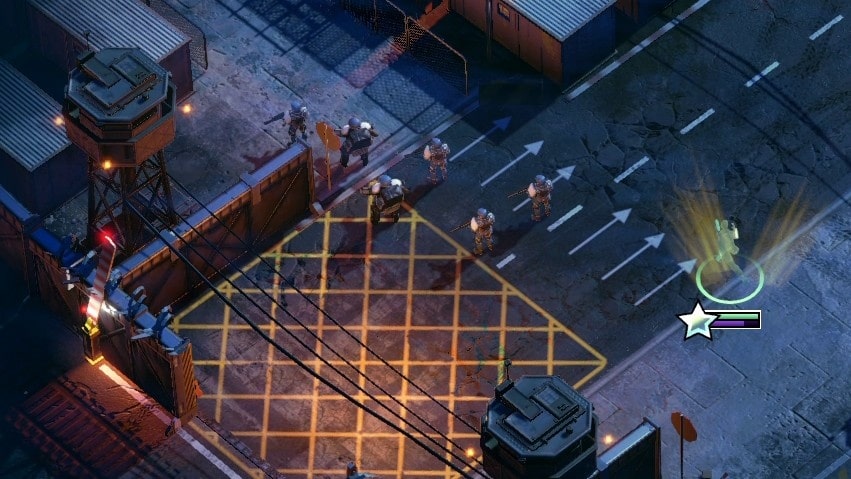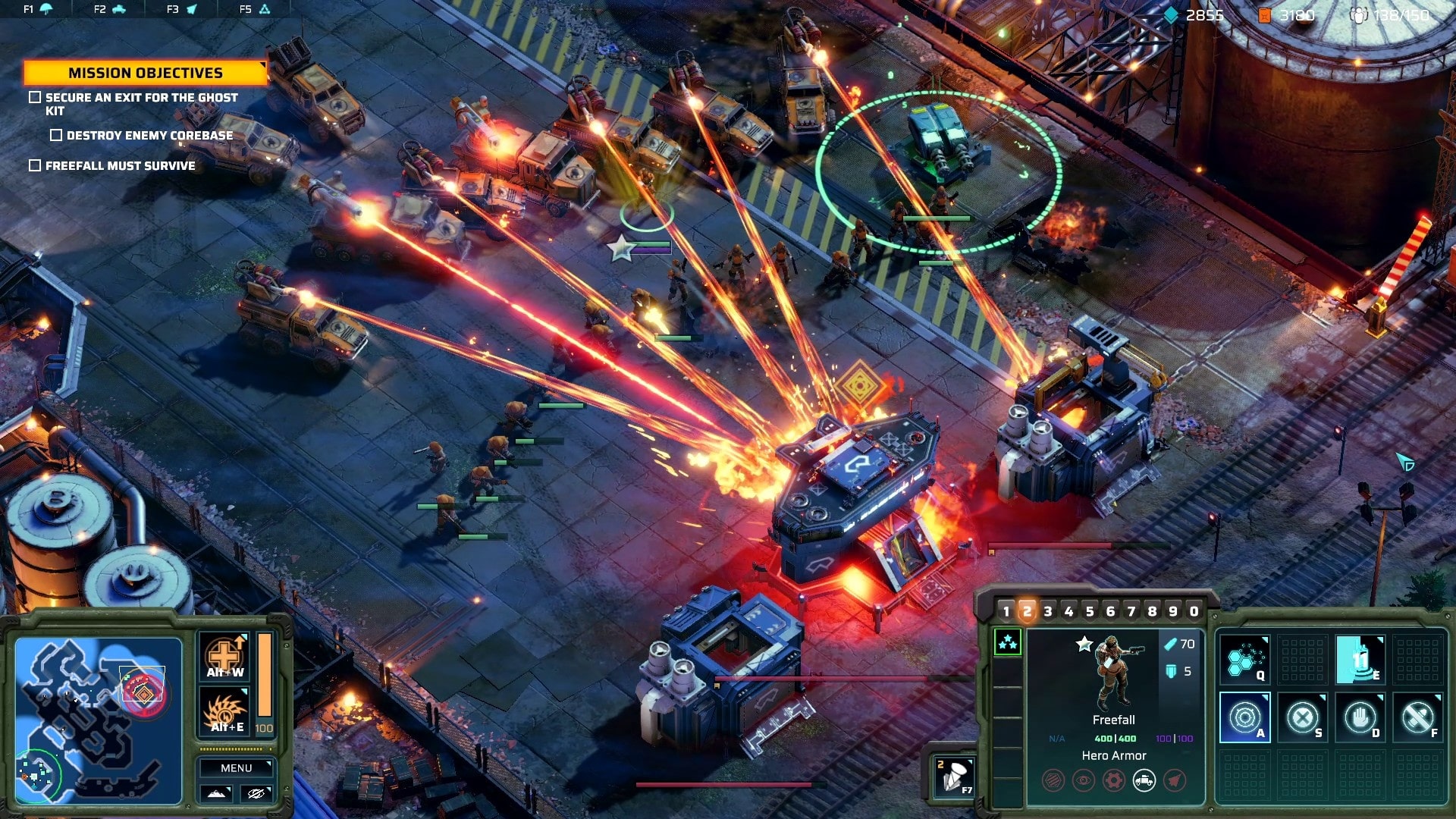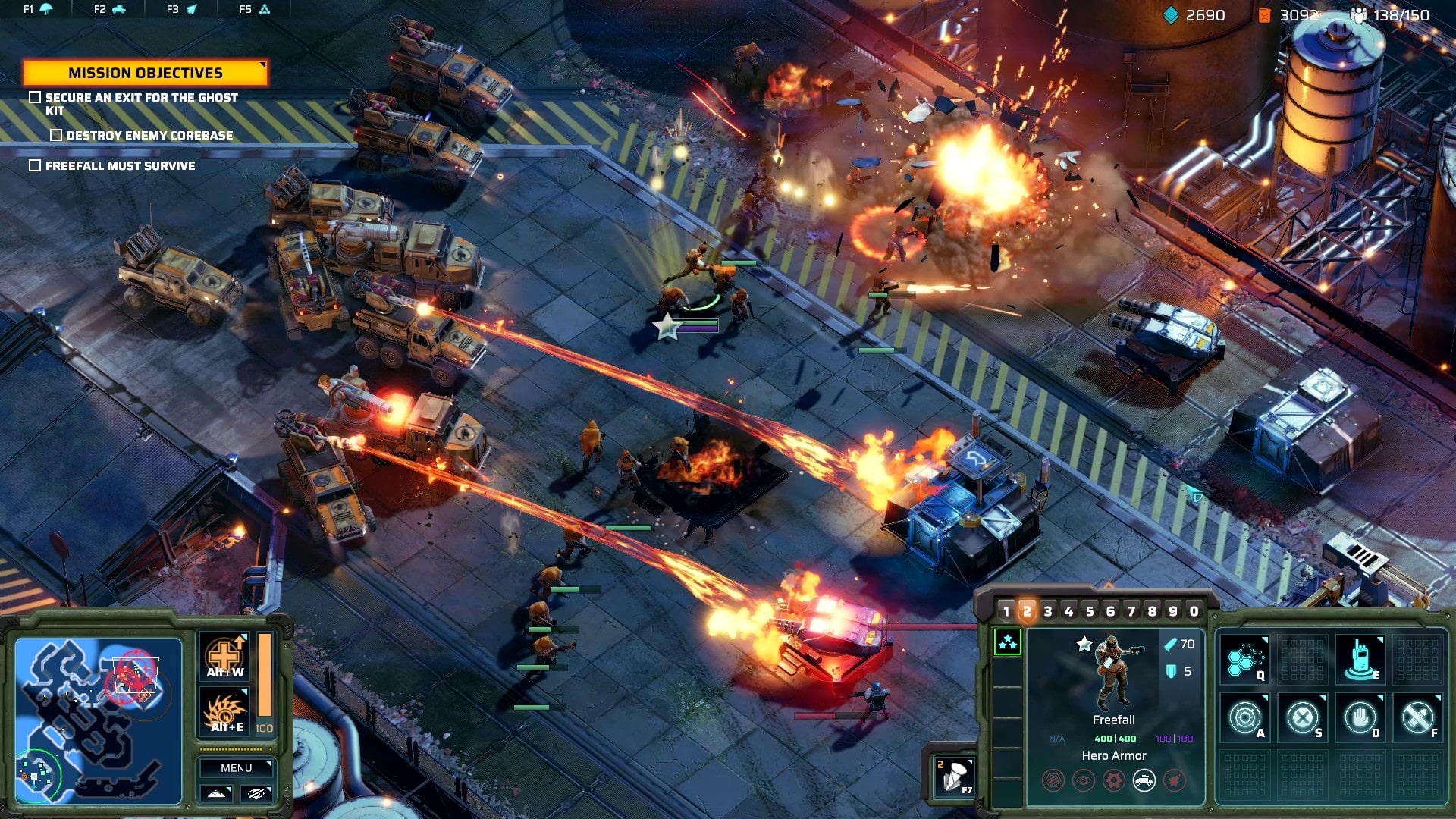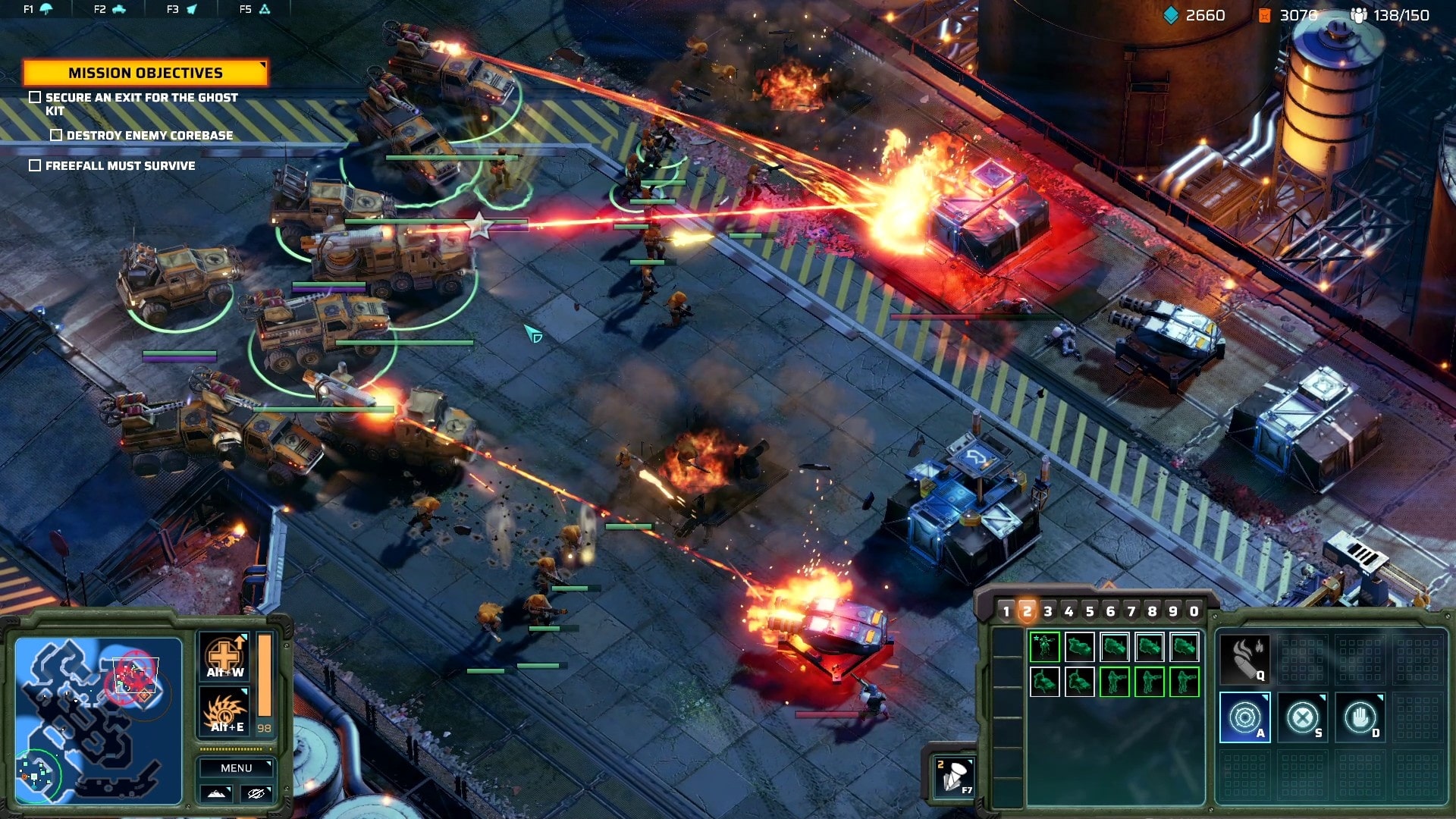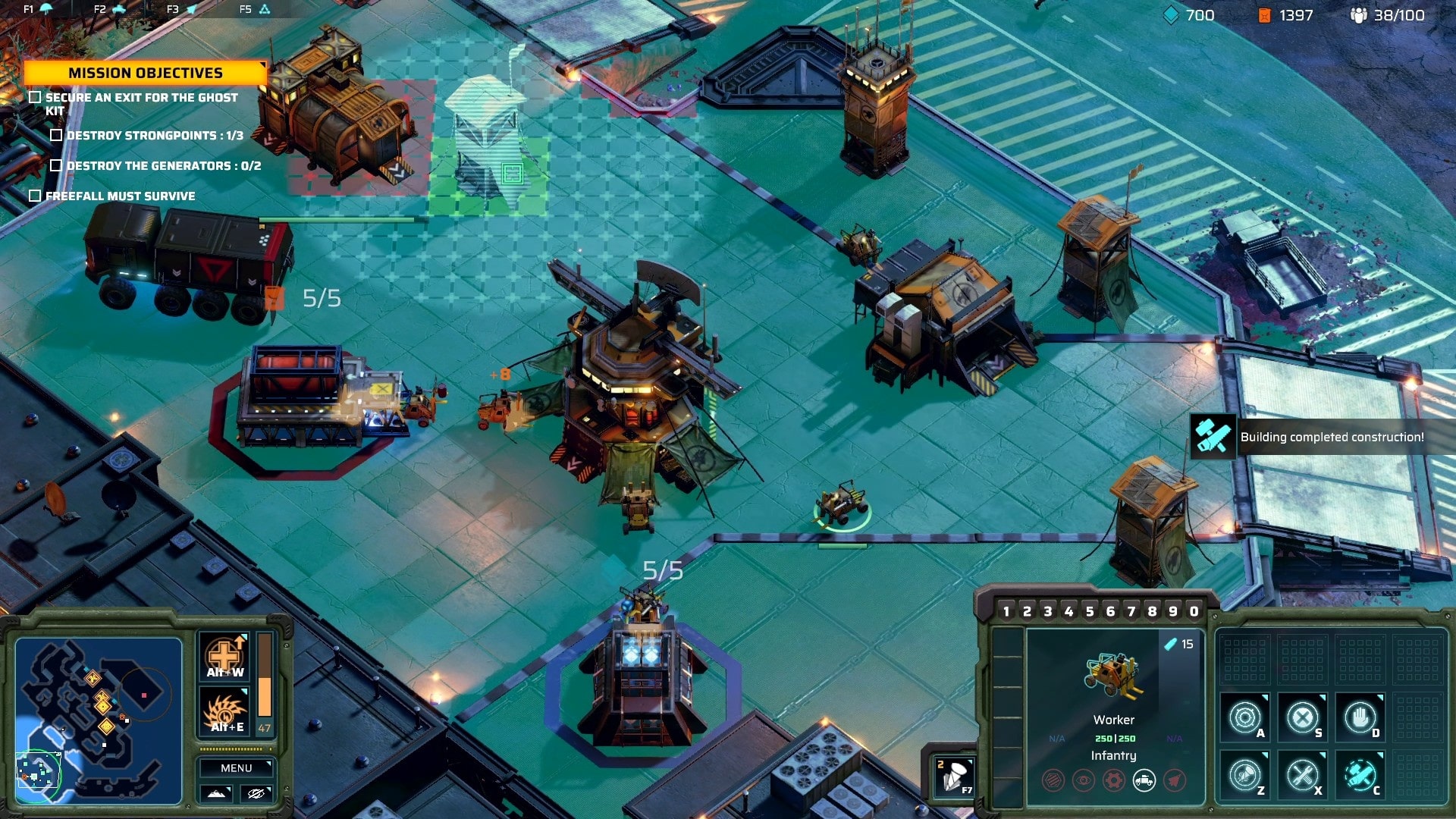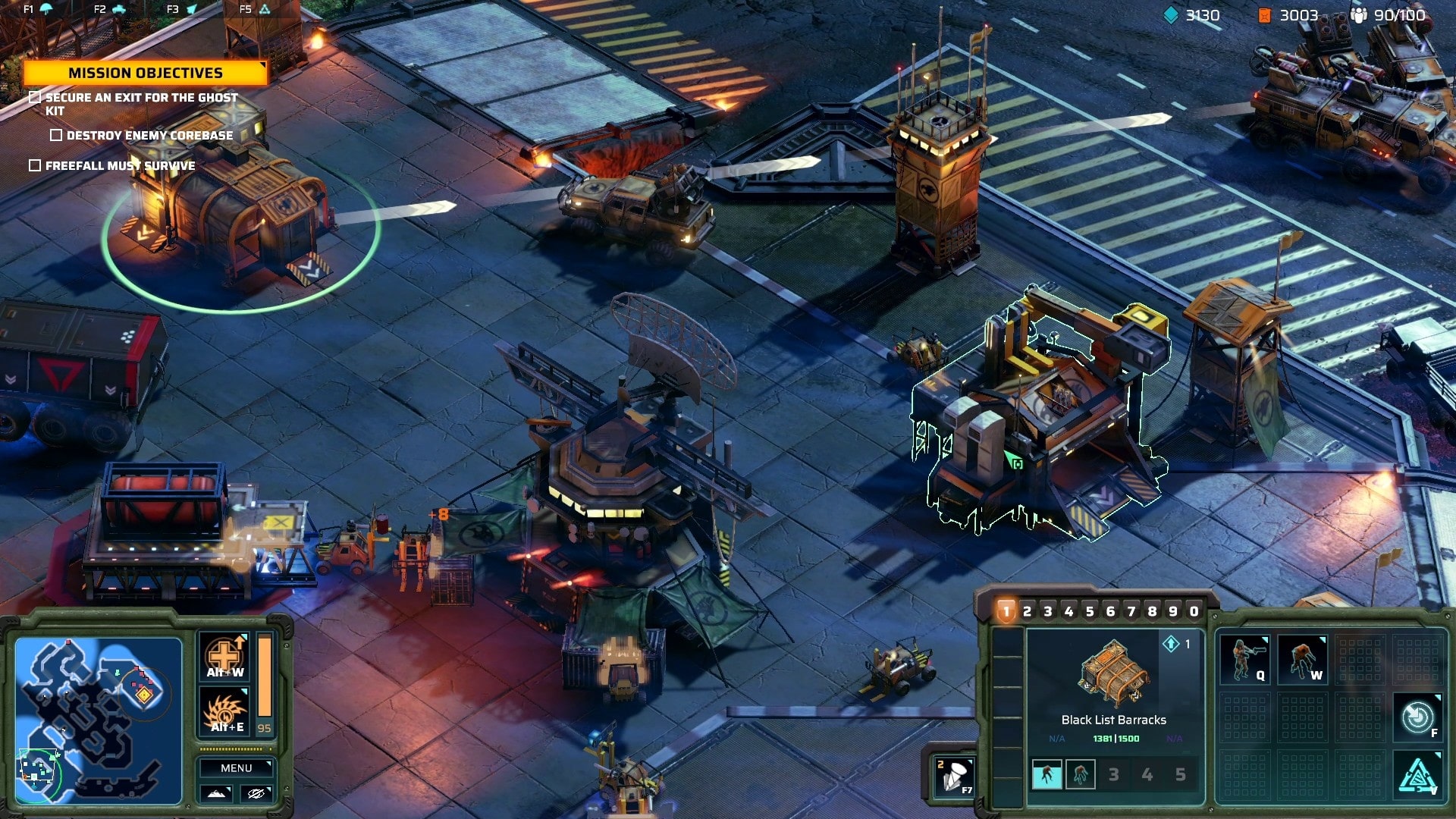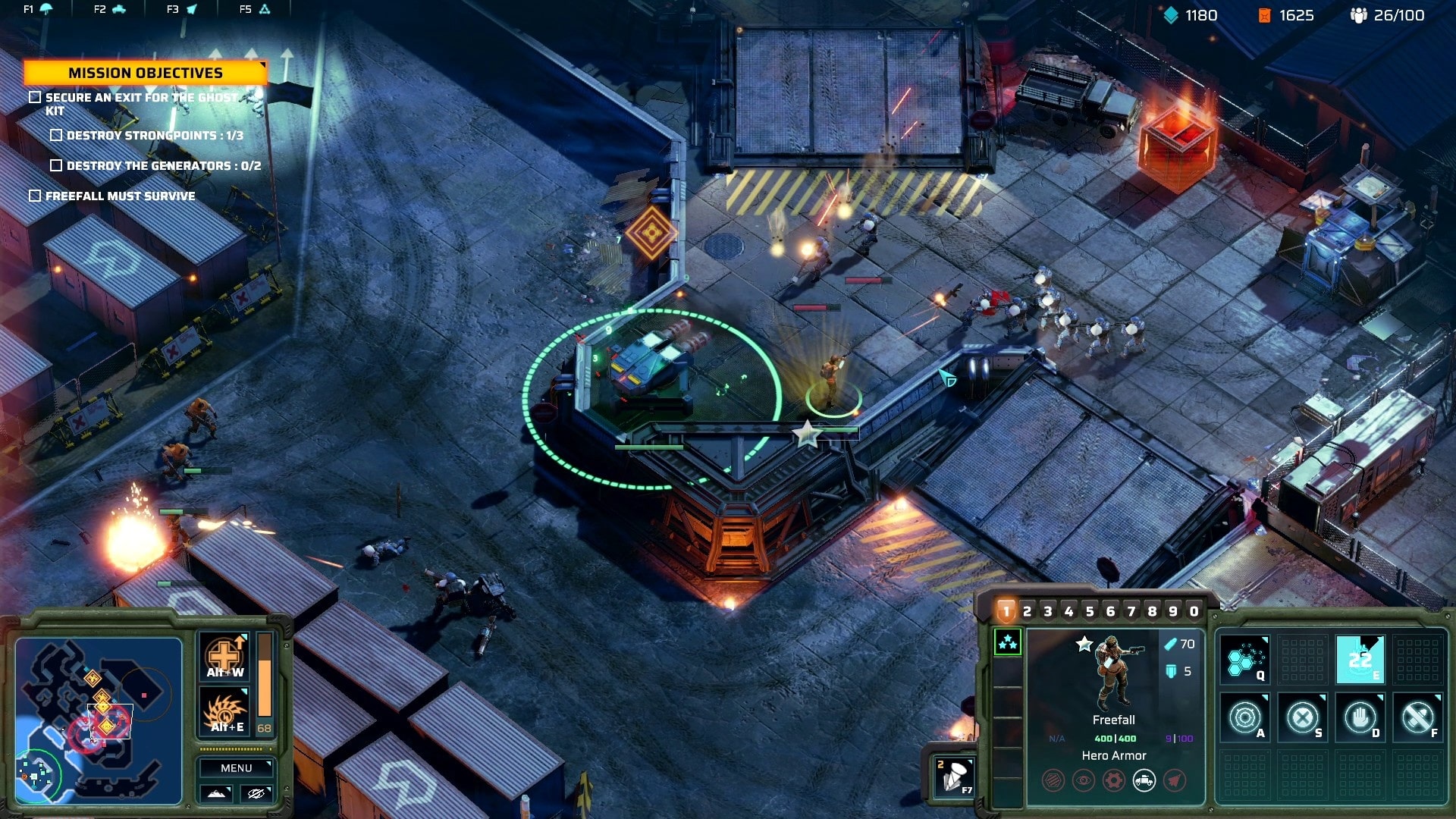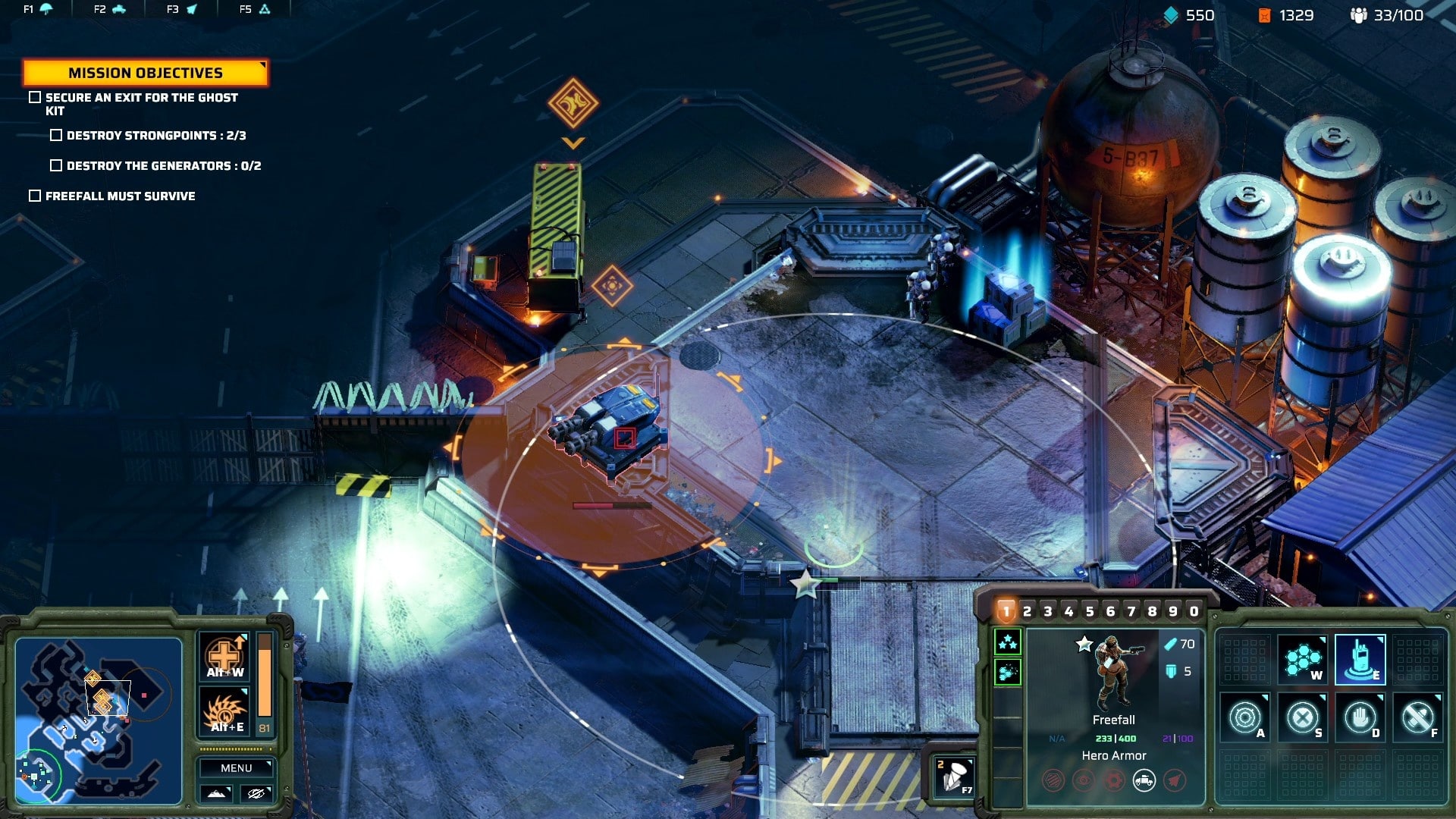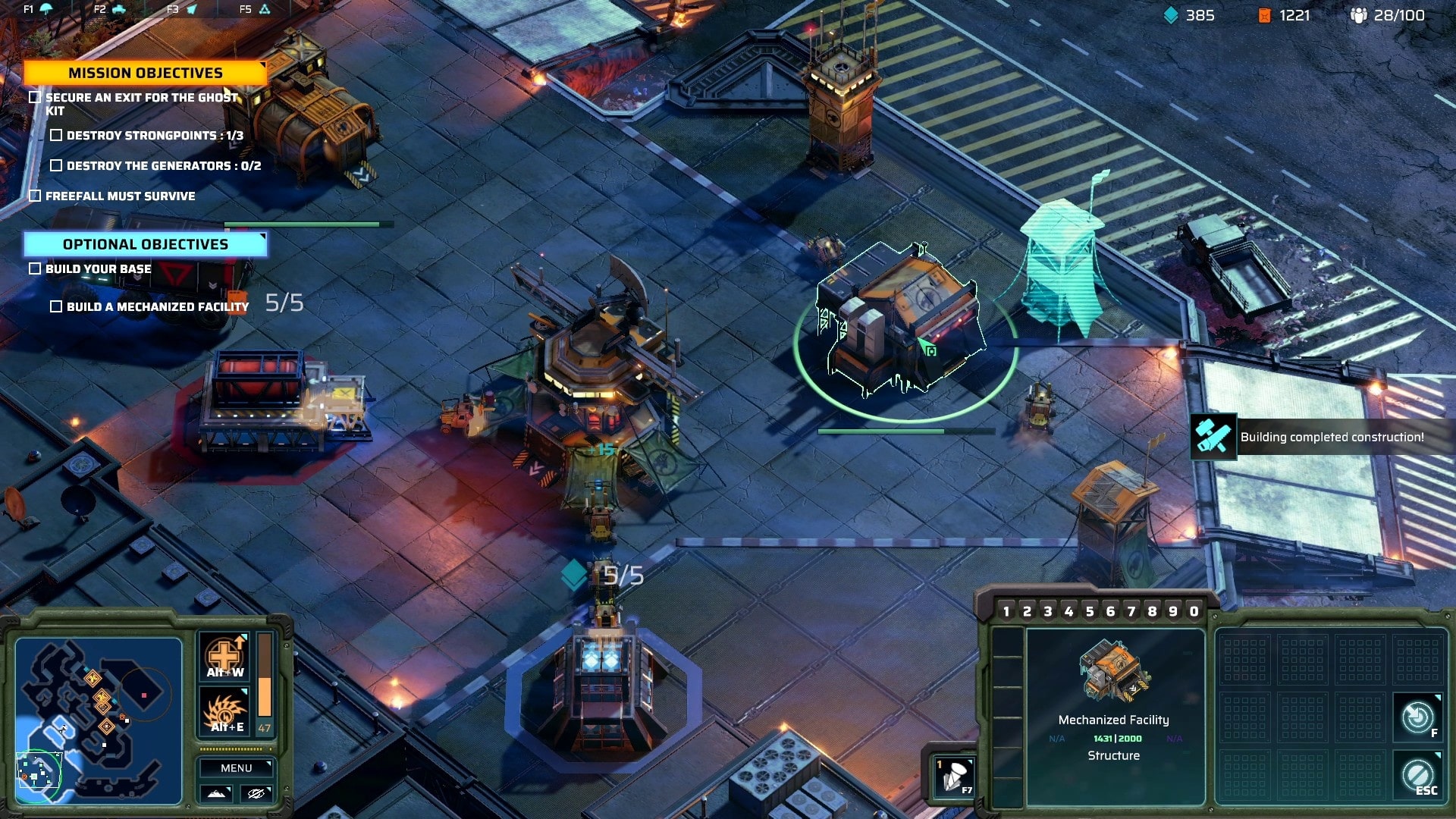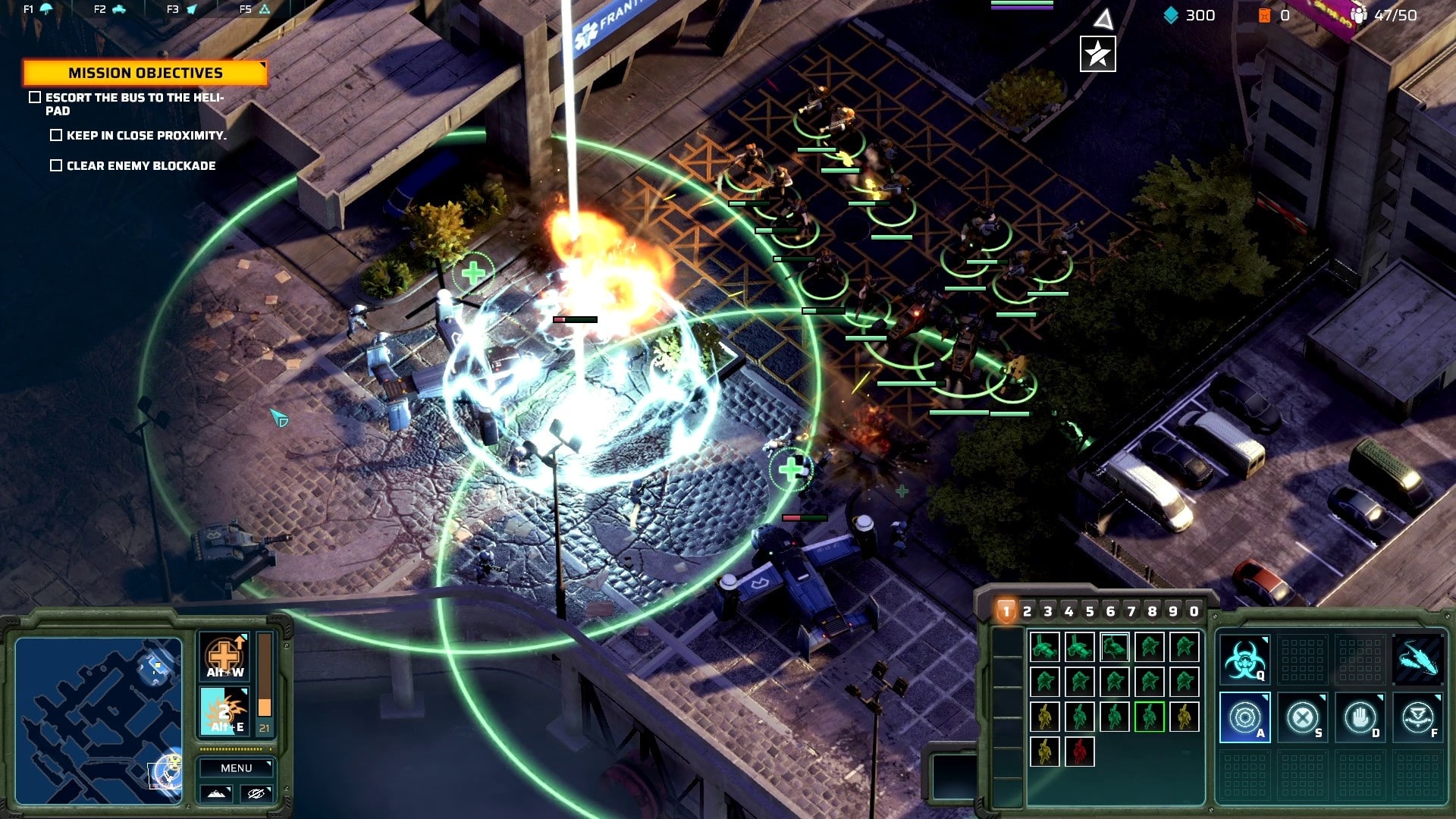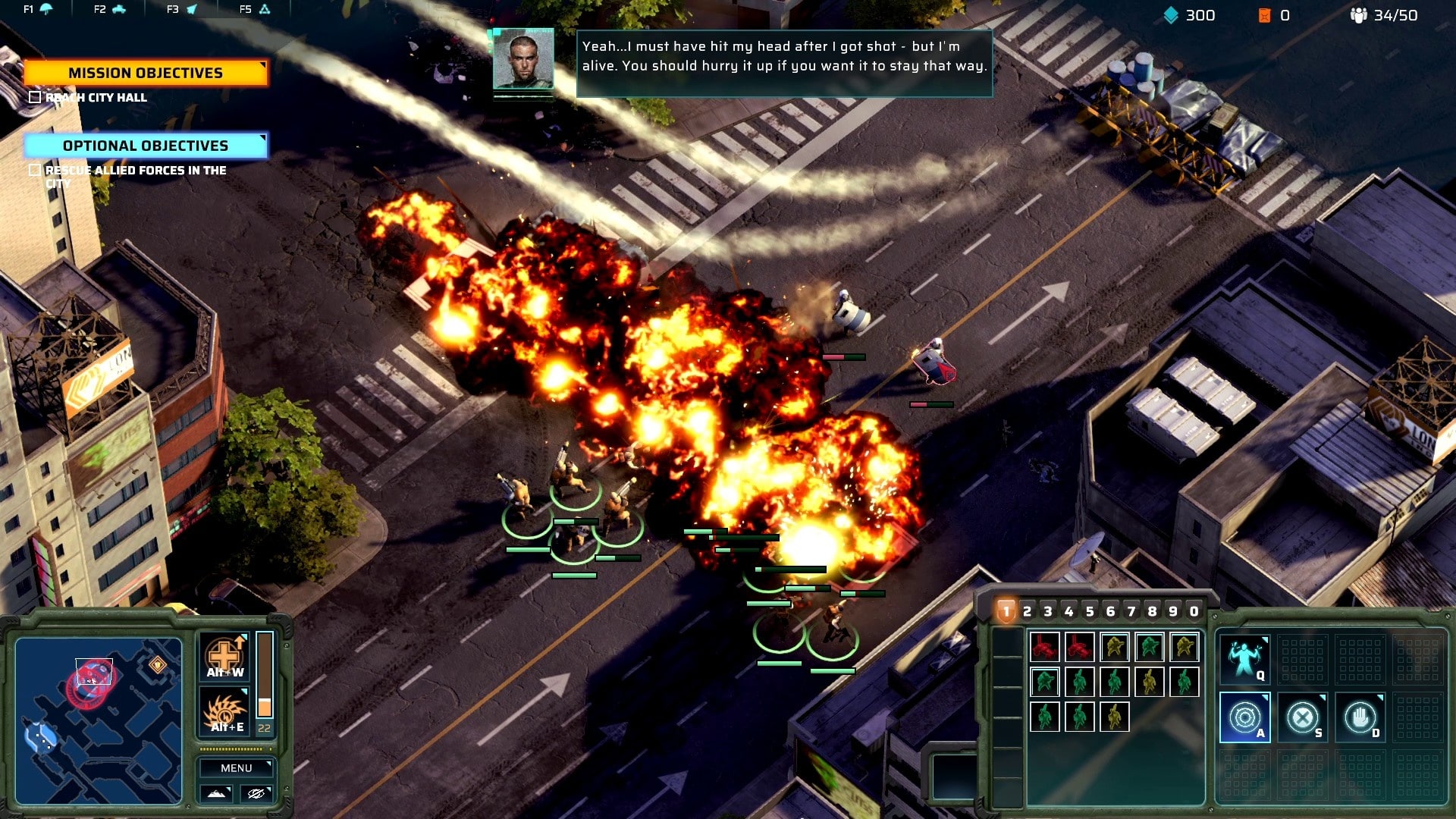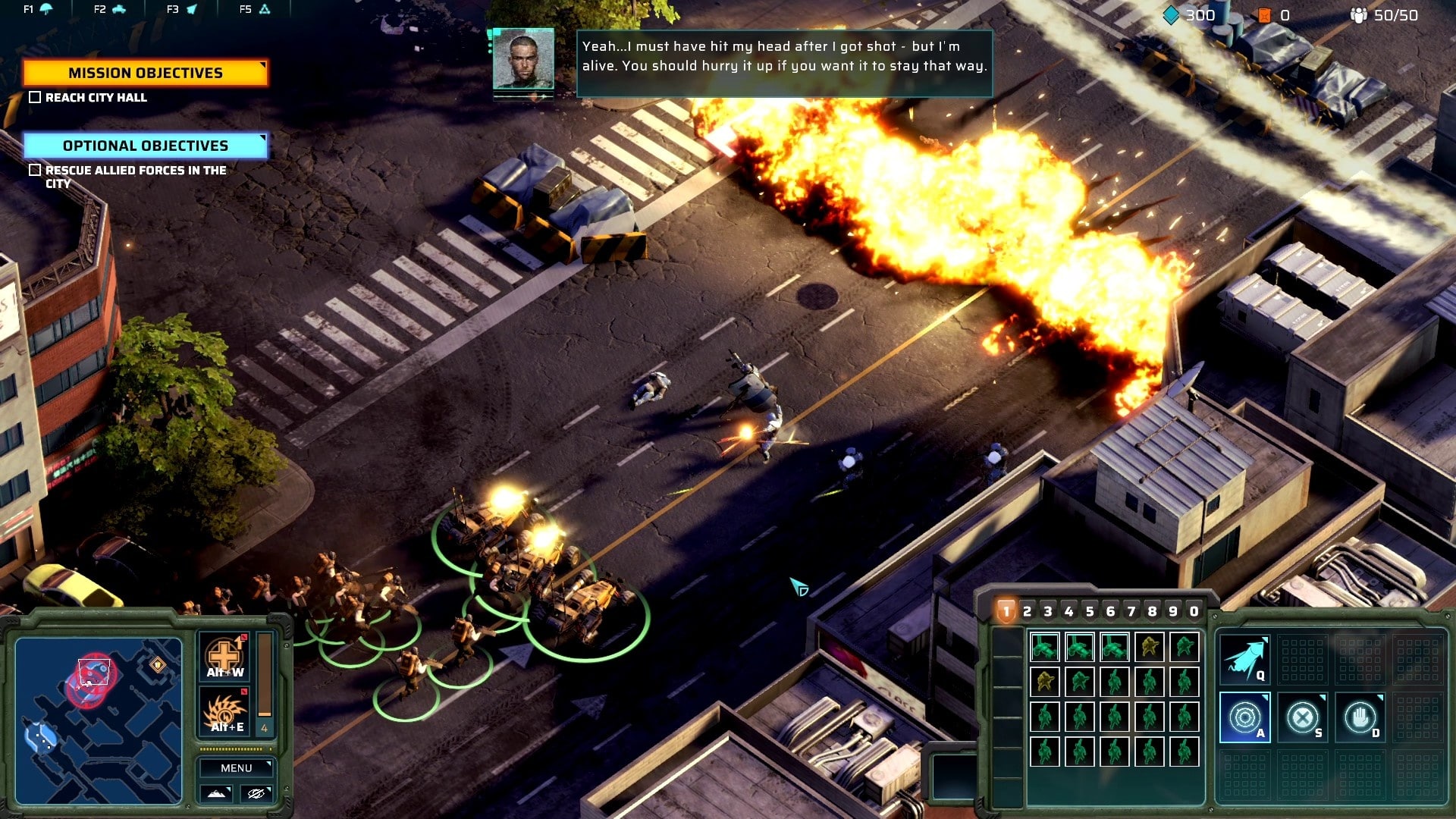We played the single player campaign and the multiplayer mode: How much Command & Conquer Generals is really in the new RTS?
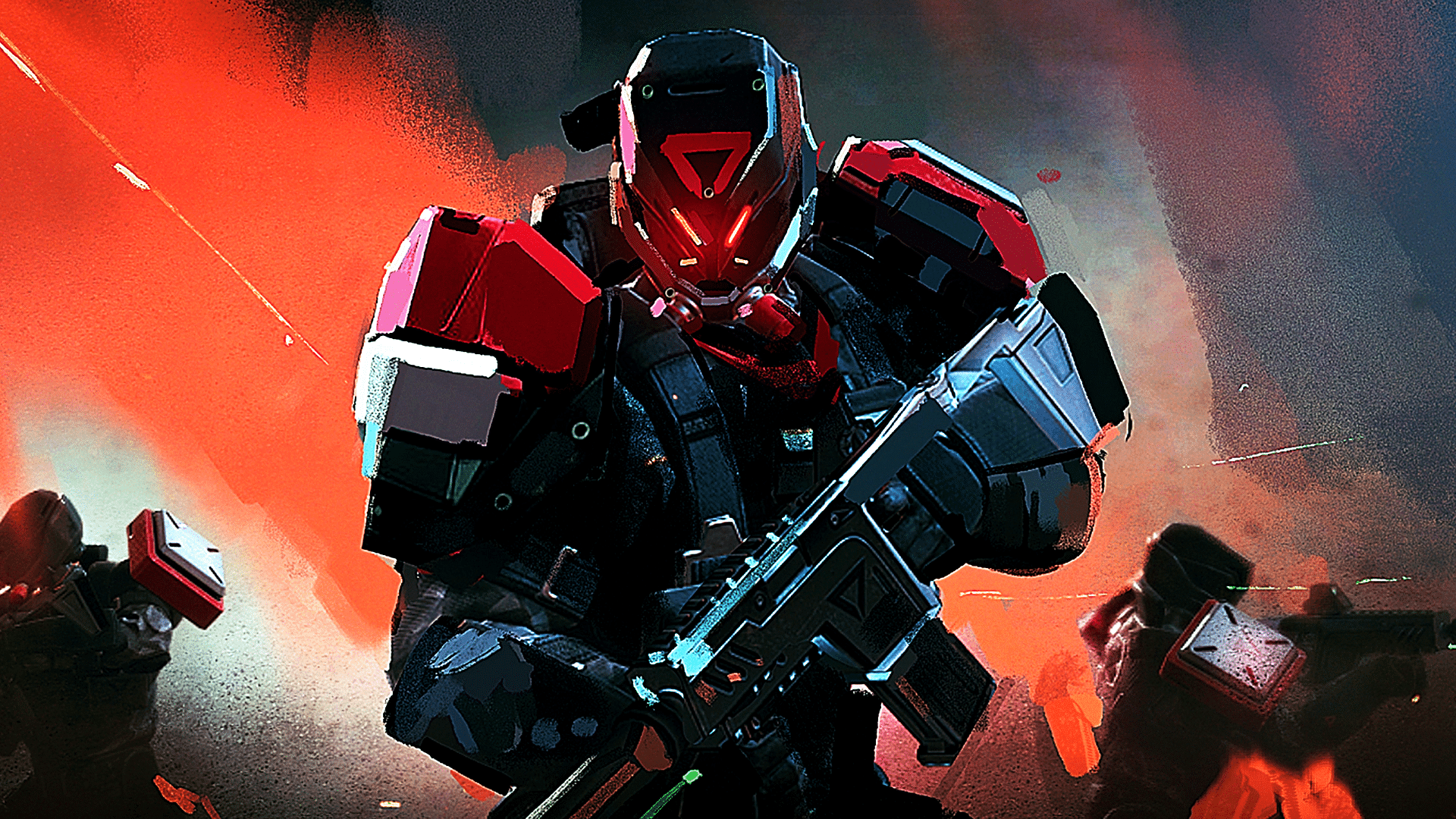
The crowbar is a fascinating tool. Gordon Freeman and Valve have made it a success. In Half-Life, it’s an all-purpose tool: You want to open a box of ammo? Smash it into splinters of wood with the crowbar! A headcrab wants to mate with Gordon’s face? Give me the crowbar! No doubt very useful, but not exactly subtle either, this piece of iron.
For this reason, you may take it as good news when I tell you that in the new real-time strategy game Crossfire: Legion it is not enough to use the crowbar against enemy positions. Building as many units as possible and sending them into the enemy base is not a valid tactic, neither in multiplayer nor in the amazingly extensive single-player campaign.
How do we know that? We tried it out, in a far advanced version that already almost corresponds to the Early Access release and includes the first four of a total of 15 solo missions. Our conclusion: What at first seems like an action-packed but not very captivating copy of Command & Conquer Generals could actually be a really good real-time strategy game with a modern military setting, as fans have wanted for years.
The fact that we were positively surprised during our test play could also have something to do with the fact that the same developers behind Crossfire: Legion, Blackbird Interactive, are the ones who most recently breathed new life into the Homeworld series.
A surprising hopeful
Currently, most of Blackbird Interactive’s staff is working on the space game Homeworld 3, but a small, separate team of twelve remains with both feet on the ground.
Instead of venturing into the vast spheres of the cosmos, they have taken more down-to-earth real-time strategy games like Act of War, Starcraft or even Command & Conquer as their model. Crossfire: Legion takes its cue from these classics and combines it with a setting whose origins go back to a multiplayer blockbuster that is almost unknown in this country.
For the multiplayer shooter Crossfire, published in South Korea, is one of the most successful games ever worldwide; between 2007 and 2020, one billion players are said to have tried the free2play title. Through in-game microtransactions, developer Smilegate (the MMO Lost Ark is from subsidiary Smilegate RPG) has taken in $12 billion by 2018.
Some of this money is now flowing back to the players: Similar to League of Legends, there are now several game spin-offs for Crossfire (such as Crossfire X), and there was also a TV series, “Arcane” sends its regards. Crossfire: Legion is now one of the first of these follow-up projects to find its way to the western hemisphere, and that is indeed good news for all real-time strategy players.
If only because Legion will not be another Free2Play game, but will be released on 26 April 2022 in (Early Access on Steam) for an as yet undetermined price and then at some point as a normal full-price game with solo campaign, multiplayer mode and a map editor for MP replenishment.
Crossfire: Legion is also set in a different time period than the original, but takes on the two major antagonists Black List and Global Risk. These almost omnipotent mercenary groups beat each other’s noses bloody in futuristic cities, icy tundras or elsewhere, plus there’s a bit of character drama in the cutscenes, but it’s more on the level of amateur dramatics.
More importantly, with New Horizon the developers throw another faction into the battle for resources and world domination, because all RTS fans have known since Starcraft that three players simply play better together.
How Crossfire: Legion plays
On the basis of the first four campaign missions, we can already get a very good picture of Crossfire: Legion. Two missions are linear, over super fast and crammed with scripted scenes, they serve more as a tutorial. But then developer Blackbird turns up the heat: The maps get bigger, base building is unlocked and there are more units, the difficulty level increases, the composition of your troops plays a bigger role than before.
On the side of Black List, the good guys in the story, you sneak past watchtowers and hack turrets with a disguised special unit. Then again, you have to clear sections of a map for two allies and time your attacks on the enemy base with the AI allies’ automated convoys to stand a chance.
Suddenly the aforementioned crowbar principle no longer works, Crossfire: Legion requires micromanagement and the consistent application of the rock/scissors/paper principle. We shoot at enemy planes with drones that explode by themselves or drag them to the ground with the special grappling hook ability of our buggies. A cleverly placed EMP strike tears a gap in the enemy’s defence line. And thanks to Black List’s teleport points, reinforcements can be brought to the front in a flash:
Important: Although there are no classic formations, it is still very important to position your troops correctly. It’s best to organise your units into control groups and make sure you don’t waste your infantry senselessly or accidentally push your planes too far into enemy territory and get shot down by flak.
Not everything is all sunshine and roses, we don’t want to hide that fact. Because the artificial intelligence and wayfinding are still in need of improvement (we are playing a pre-alpha version), there are sometimes unnecessary scuffles between allied units. Moreover, vehicles and soldiers move at different speeds even when they are in a group, instead of adapting to the slowest member of the troop. We therefore quickly got into the habit of using the “Attack Move” and “Hold Position” commands to better control units.
Meanwhile, base building, while evoking nostalgic feelings, is nowhere near as complex as it could be. According to game designer Maurice Grela, this was a deliberate compromise. We click together upgrades for main buildings and the barracks or factories, which unlock new units. Defence towers automatically target enemies, walls cannot be built. Annoying: The construction queue allows a maximum of five units to be ordered in advance at the same time.
The procurement of raw materials is almost automatic. The two raw materials are mined by your workers as in Starcraft, and from time to time there are supply crates in the area. There is also a population limit.
Unusual in missions set in densely populated cities: Buildings cannot be occupied by infantry, and there is no bunker mechanic as in C&C: Generals. Blackbird Interactive wants to remedy another shortcoming during the Early Access phase: Currently, there is no save function during the missions. But this is already on the agenda and has “high priority”, Maurice Grela reassures us in the interview.
The developers want to be ready by the 4th quarter of 2022, when version 1.0 is to be released. On the one hand, this seems very ambitious to us, but on the other hand, Crossfire: Legion already feels mature, for example in terms of interface and controls.
Until the final release, the three other missing acts of the single-player campaign are to be gradually integrated into the game, and the developers also want to implement changes to mission design, multiplayer balance and PvP game modes on a monthly basis based on fan feedback.
The multiplayer should carry the game – and also finance it?
Three modes are confirmed so far, besides the usual PvP (1v1 and 3v3 on two maps) there’s a more tactical variant with Payload, in which three crates have to be transported to the enemy base. And then there’s Operation Thunderstrike, a co-op mode for three players who compete against AI hordes. Incidentally, the campaign cannot be played cooperatively.
According to its own statement, Blackbird is already working on other modes and maps, and the editor for the latter will be made available to the community in Early Access. However, it can only be used to create multiplayer maps, not new single-player content. Nevertheless, the developers hope to create a lively community that will continue to create new maps for many years after the release, just like in the RTS classics of Warcraft 3.
A sore spot in the otherwise solid armour of Crossfire: Legion could prove to be something else, however. The developers are currently still thinking about whether and how the game should be monetised after release. One thing is clear so far: Legion will not be a Free2Play game, you will have to pay as usual to play.
But in the interview, Maurice Grela also talks about so-called “hard currency”, which you will be able to spend on microtransactions in the in-game shop, i.e. real euros. By completing operations, i.e. daily quests, you collect in-game currency in multiplayer mode, with which you gradually unlock new units and commanders. The latter work like in C&C Generals and enable certain play styles. Currently, the developers are still debating which of these will also be available for purchase with real money.
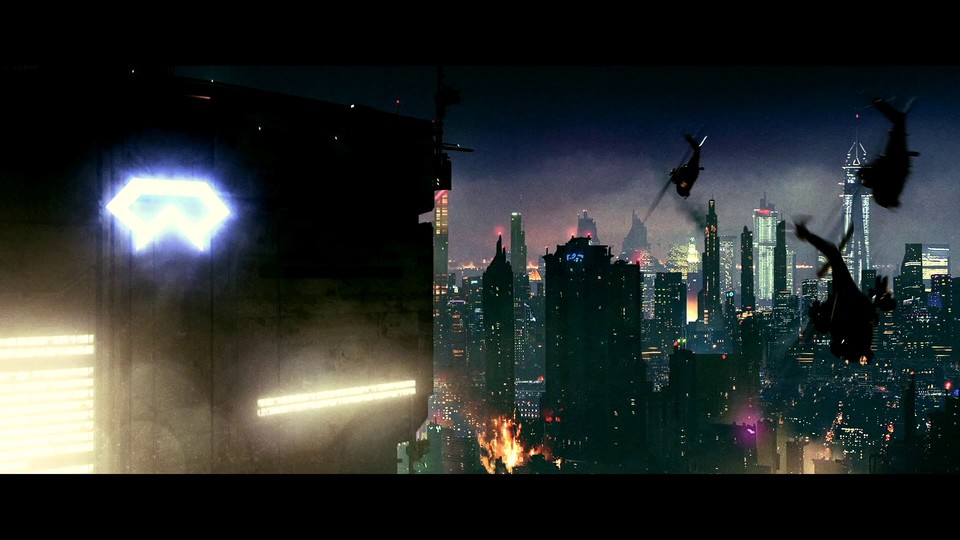
Pay2Win mechanics are to be avoided, but this might be difficult if players with a fat wallet can get troops from the top of the research tree or a particularly strong commander more quickly by means of an XP booster. Game designer Grela says that matchmaking will only match such players with competitors who have a comparable level in the progression system. And of course, in the end, you have to learn how to handle the fattest tanks first, even if you buy them outright for a few euros.
“When discussing the conditions for buying our currency, we actively check other examples in the industry to see what they are doing right. And what they are doing wrong to learn from. […] It’s a difficult tightrope to walk.”
Maurice Grela
A deck system requires tactical decisions before the game starts: nine slots are at your disposal and you have to choose which units you want to have access to during the course of the match. This is supposed to be accompanied by other mechanics, but Grela does not reveal which ones. When asked about the possibility of upgrading units or destroying cards à la Hearthstone for resources in order to craft other cards, he reacts cautiously:
“We are very, very careful about that. This goes back to the Pay2Win mechanisms that were mentioned. There are a lot of points that cause stomachaches for western players in particular, and that extends to these kinds of systems as well.”
Editor’s conclusion
I trust Maurice. Real-time strategy expert named Maurice, Maurice Grela. The game designer had the right answers ready in the interview and wants to make Crossfire: Legion as great as the genre once was in his and my memory. Contrary to my preconceptions, after Mission 4 of 15 I am extremely curious to see whether he and his comrades-in-arms at Blackbird Interactive succeed in doing so. Because what I played here is actually an old-school RTS that is incredibly fun, even though (or perhaps because?) it doesn’t do much differently. Question marks remain about the microtransactions and how the multiplayer performs in the endurance test. In any case, there are plenty of approaches for a surprisingly successful representative.

